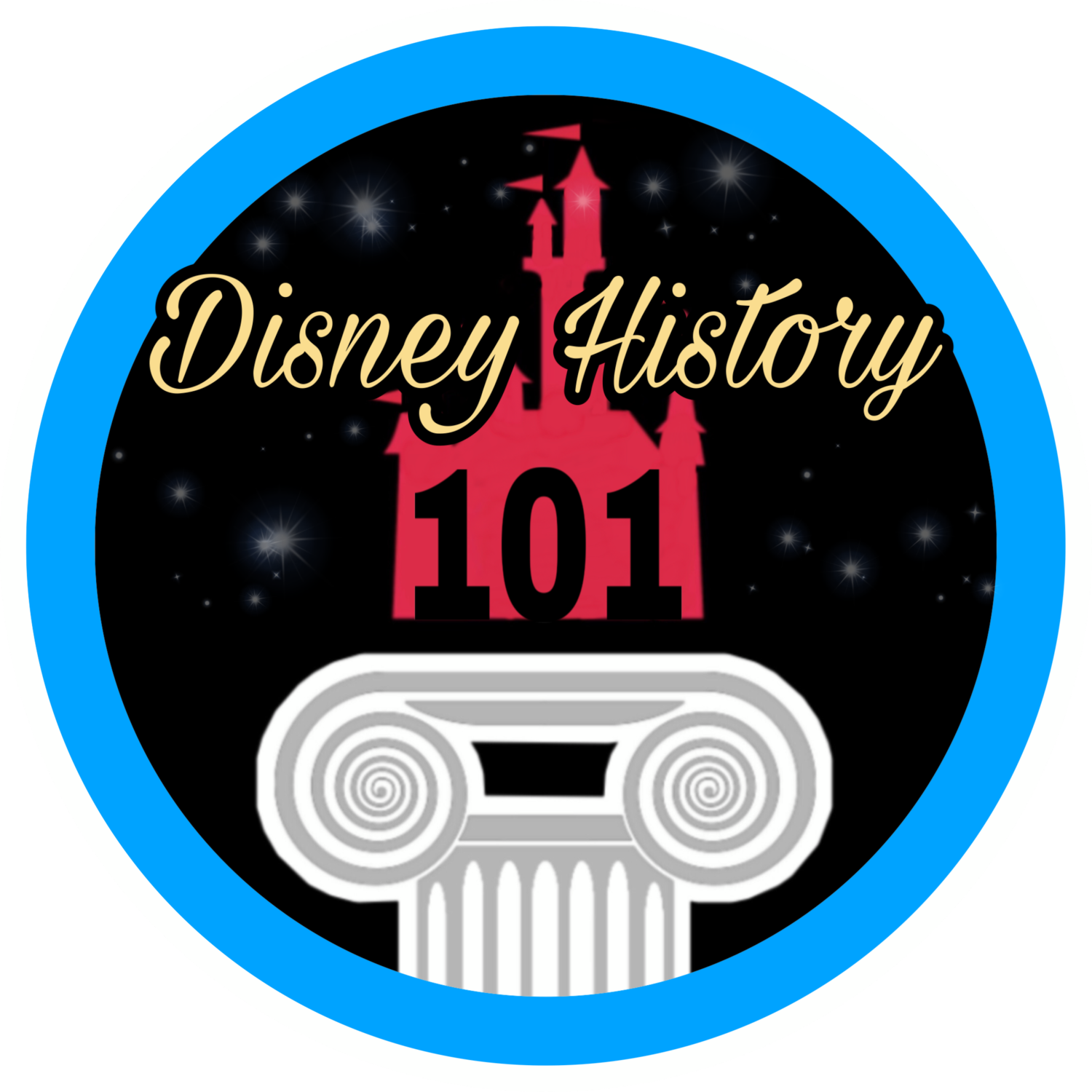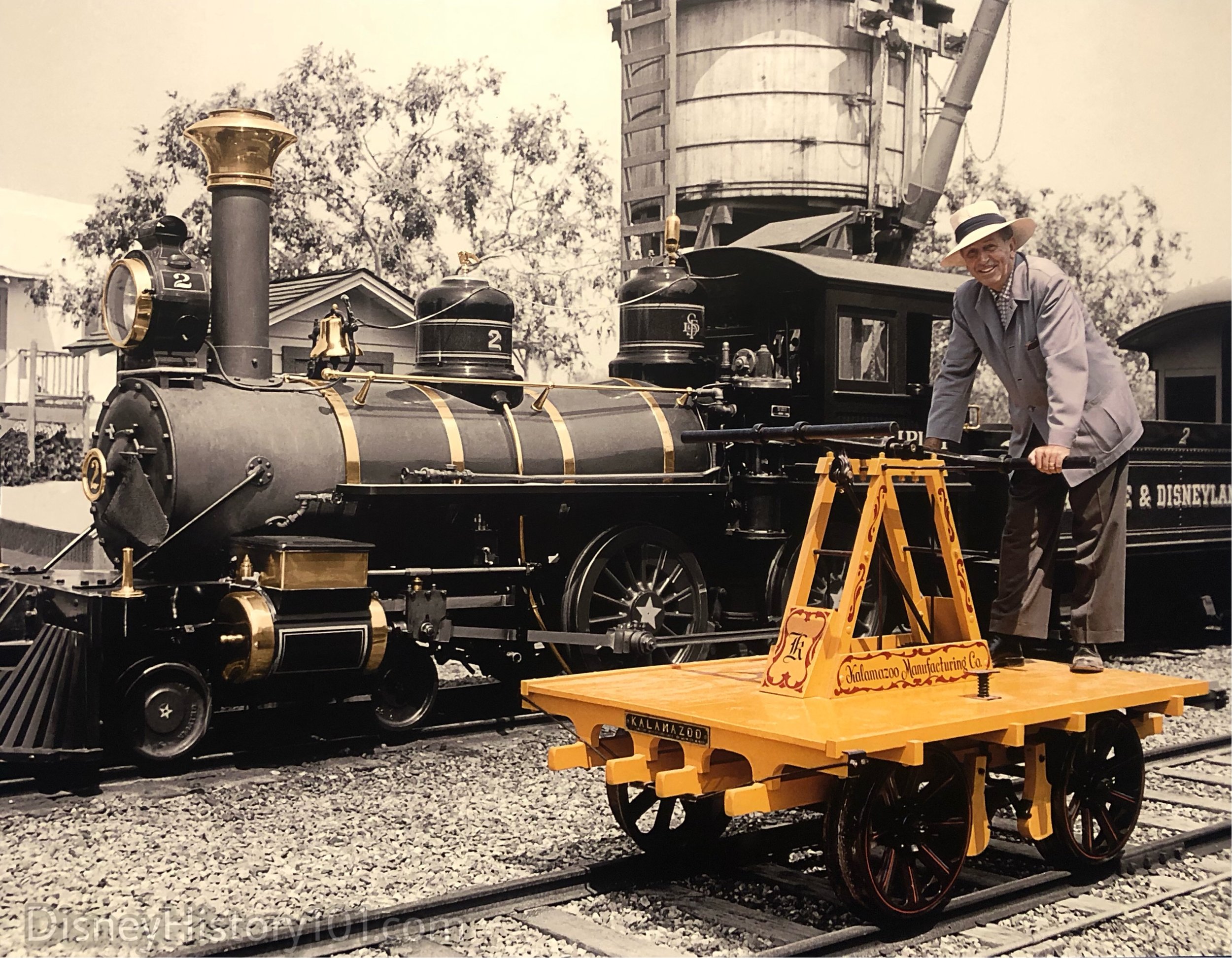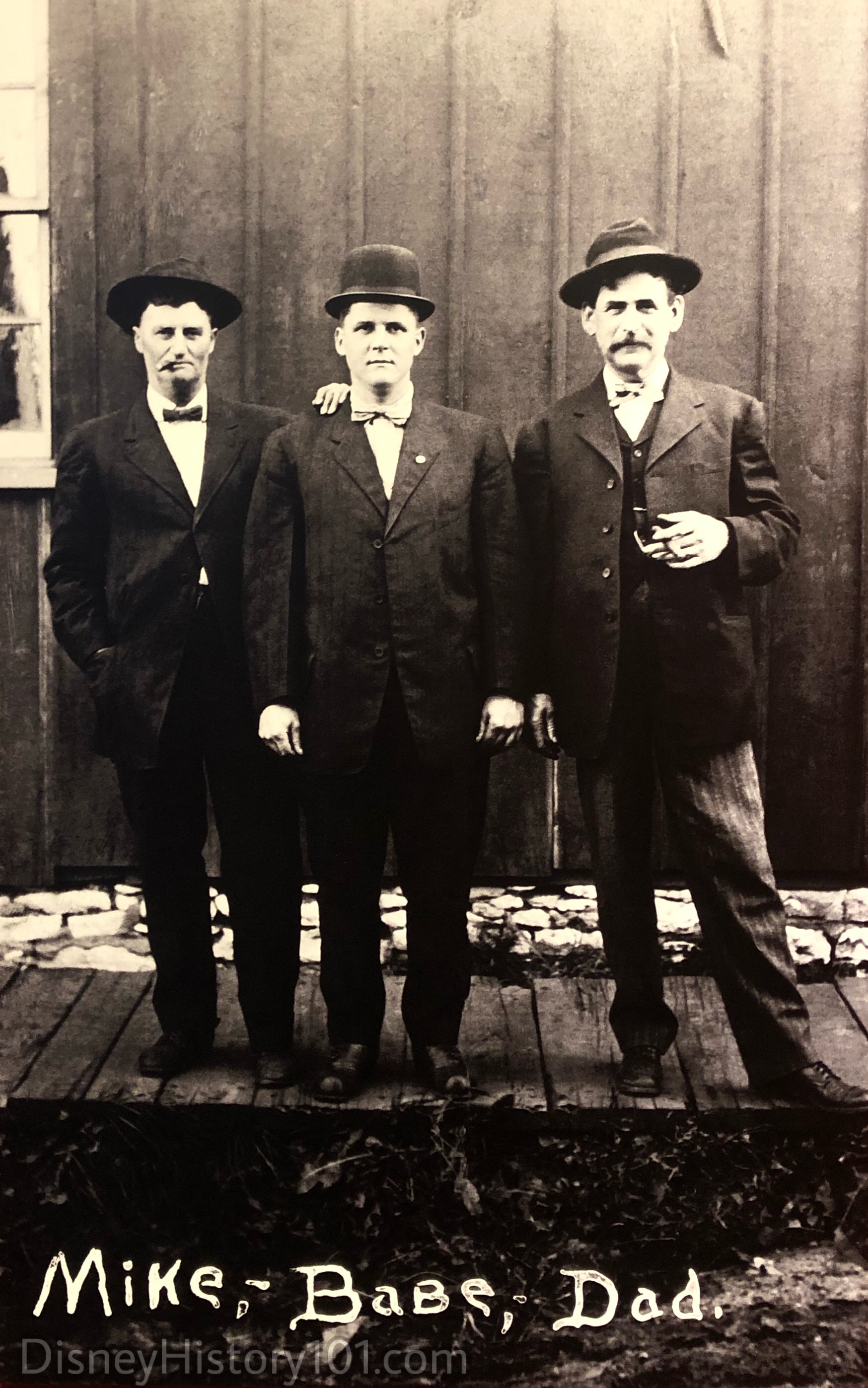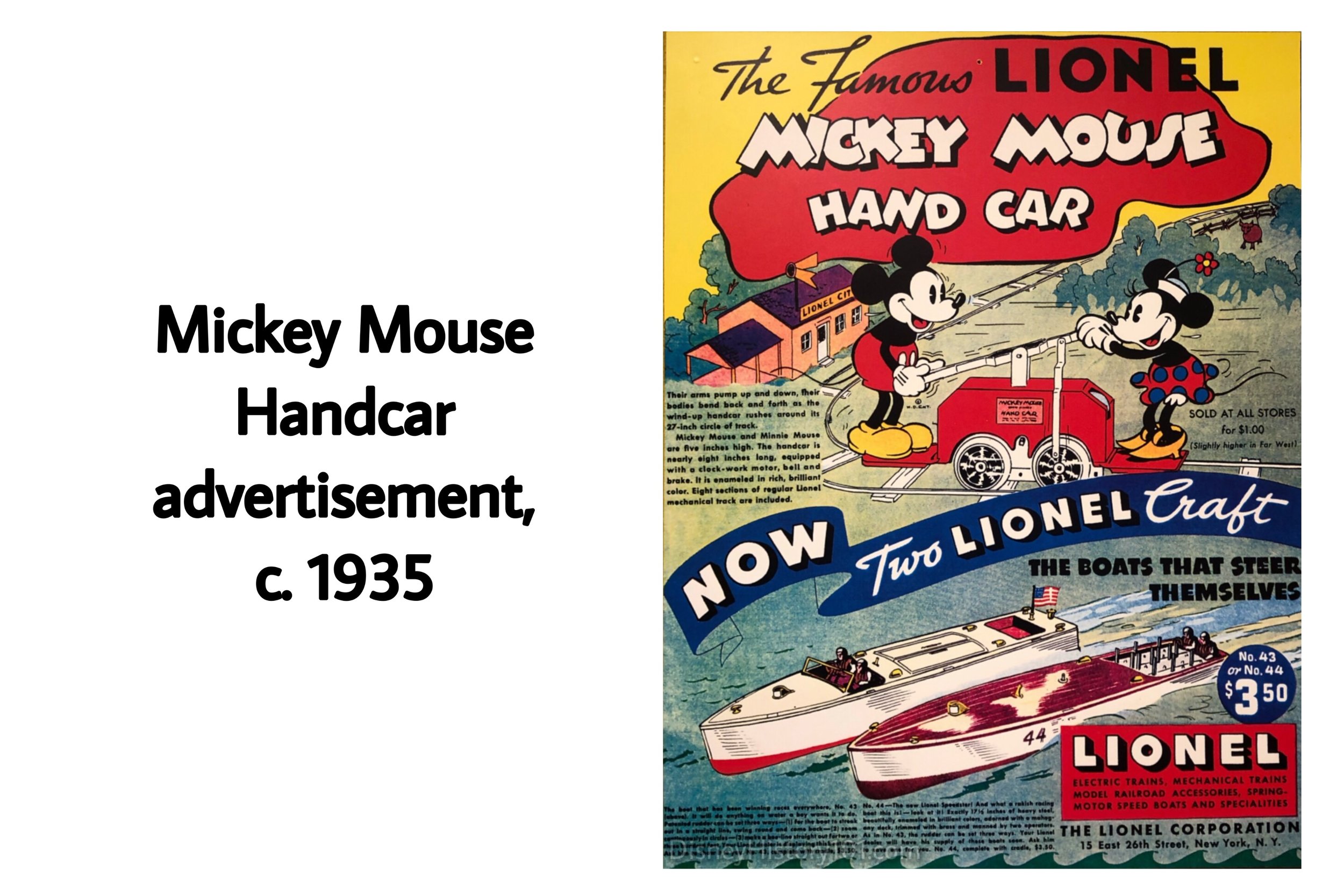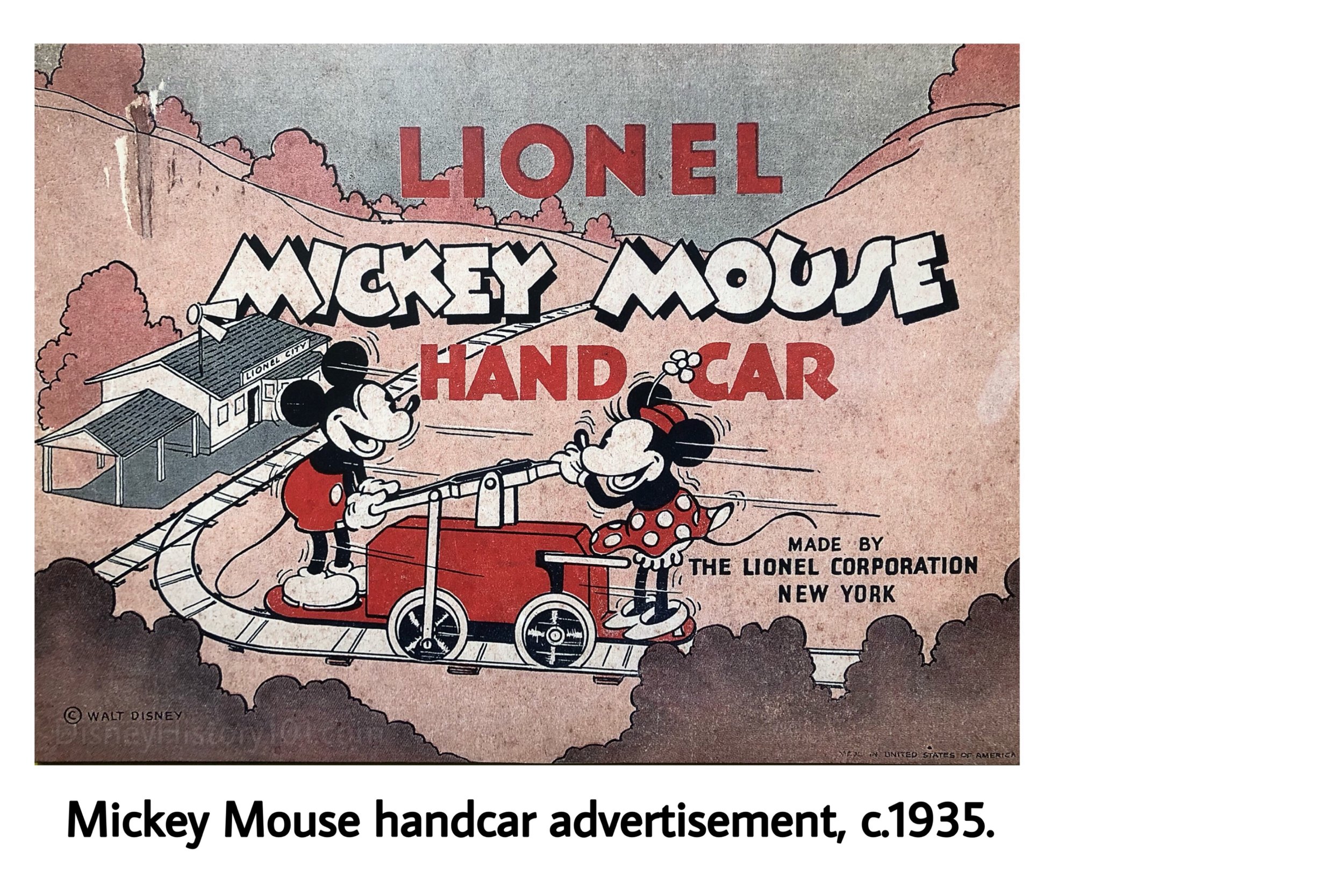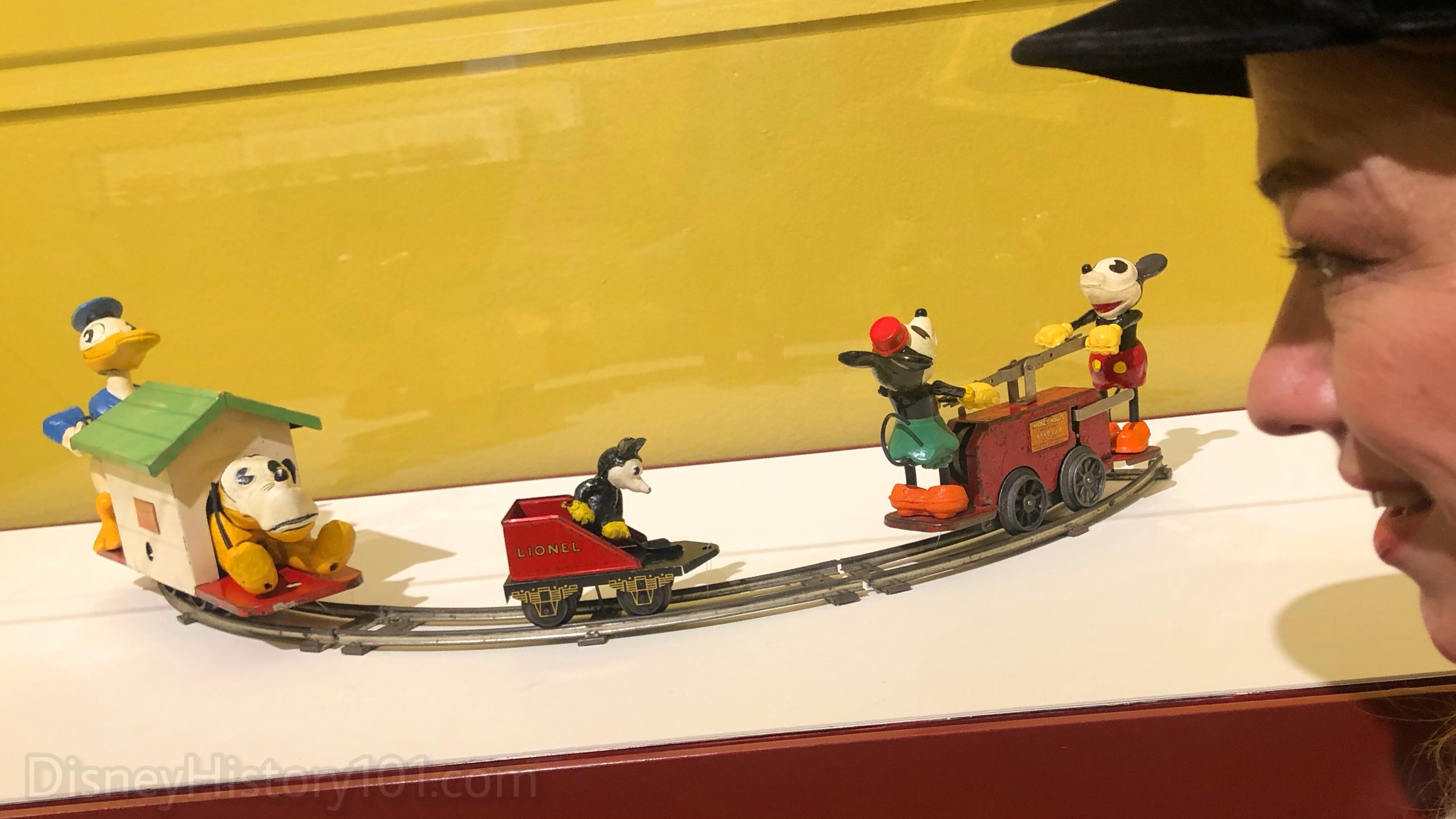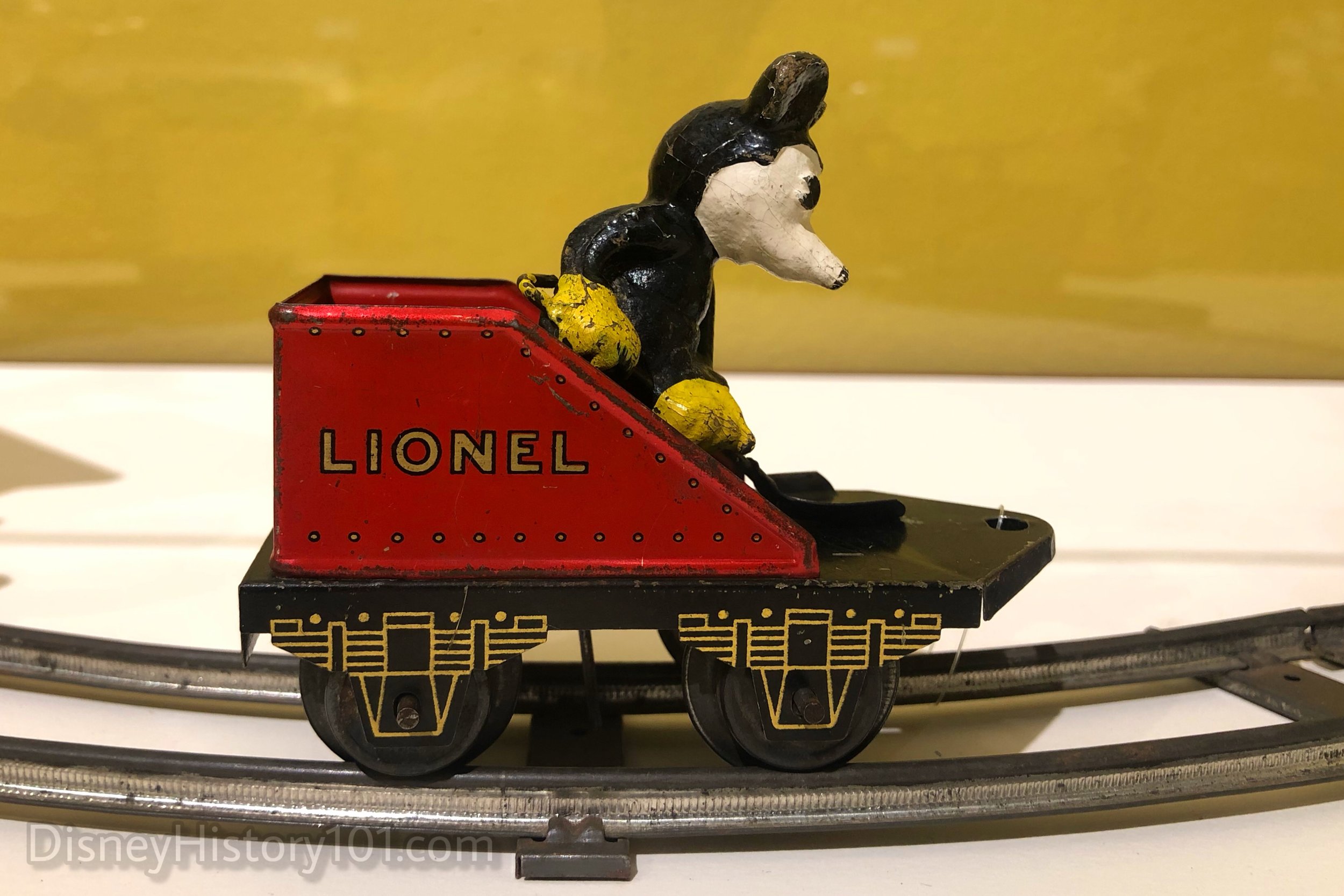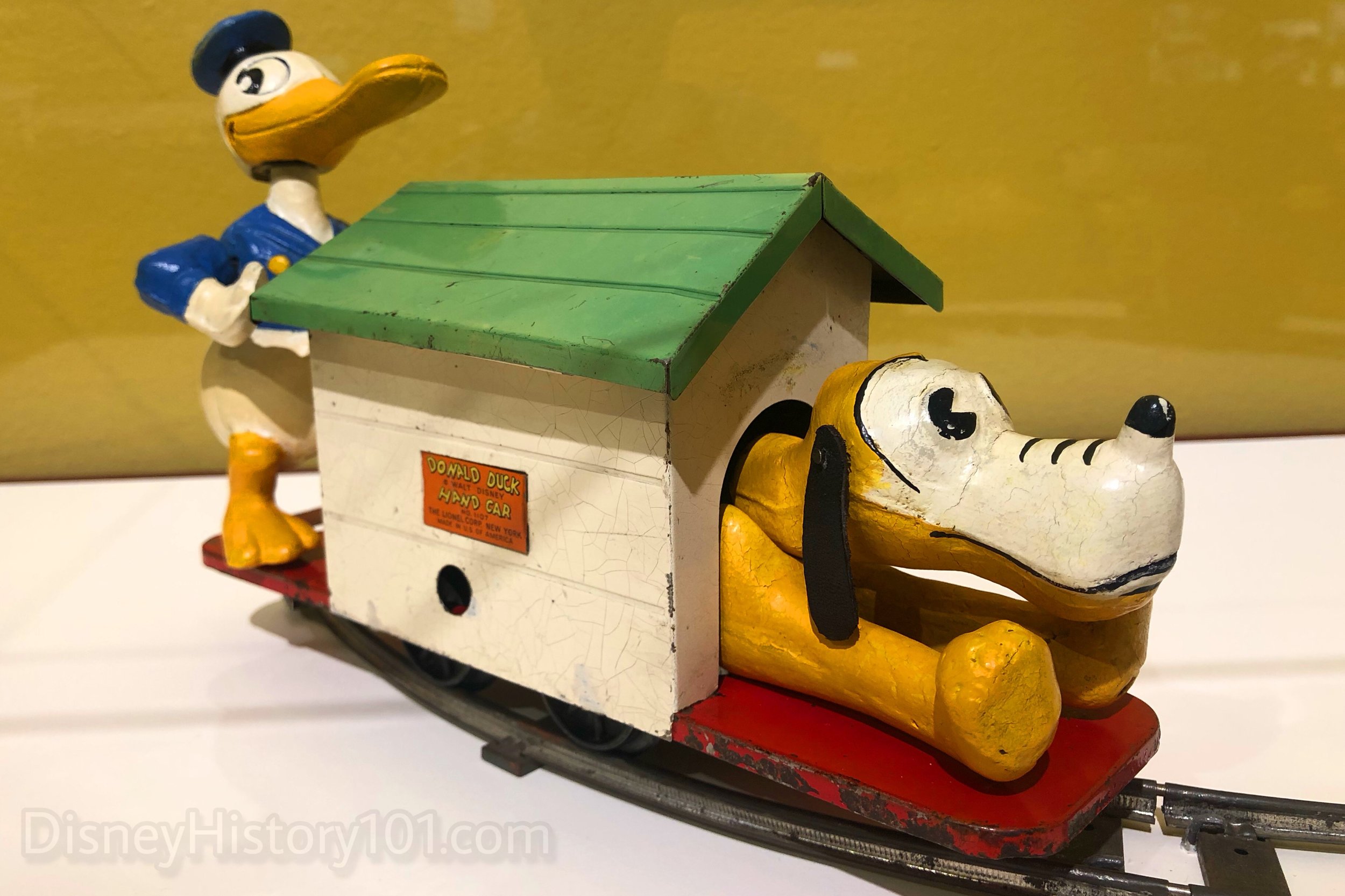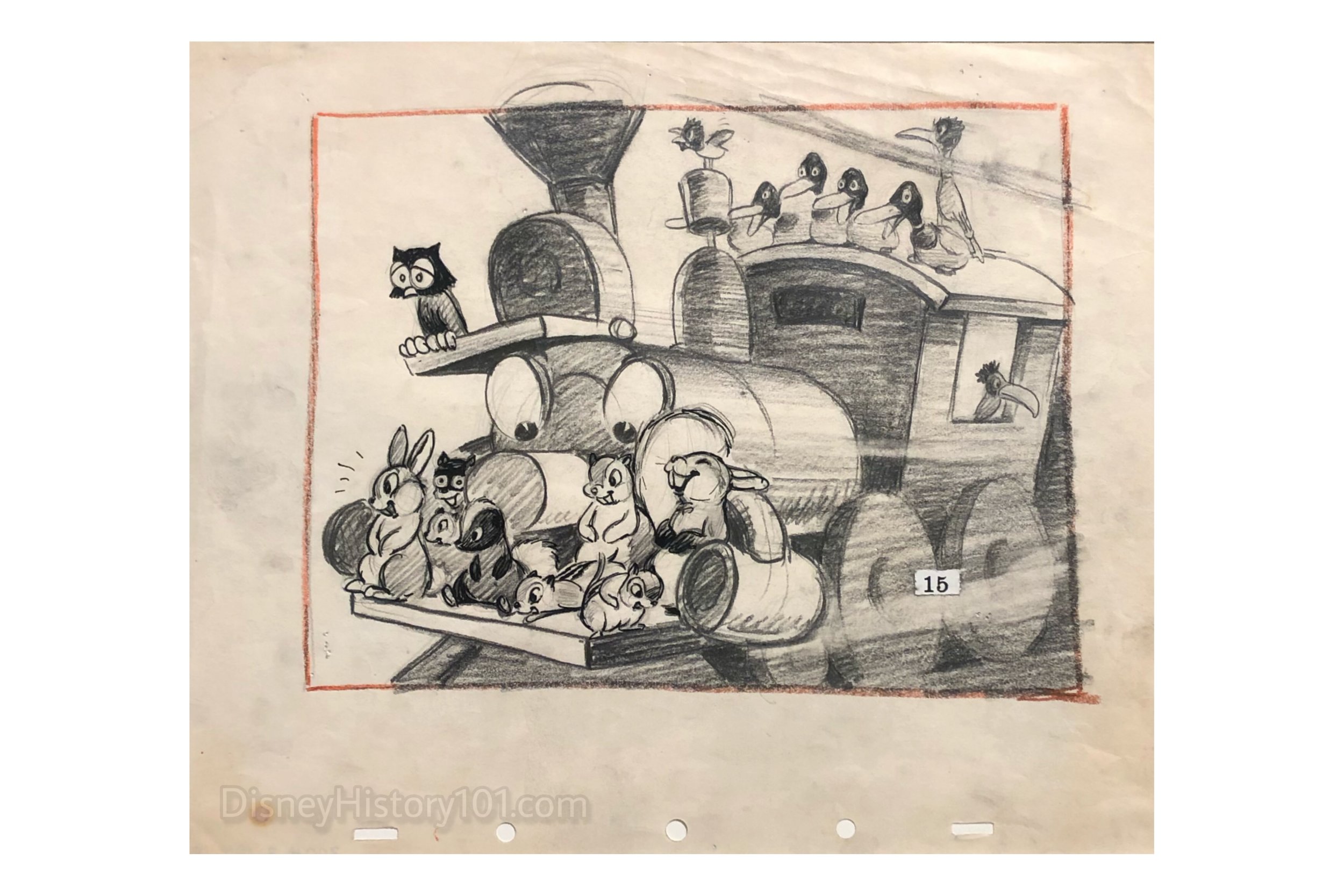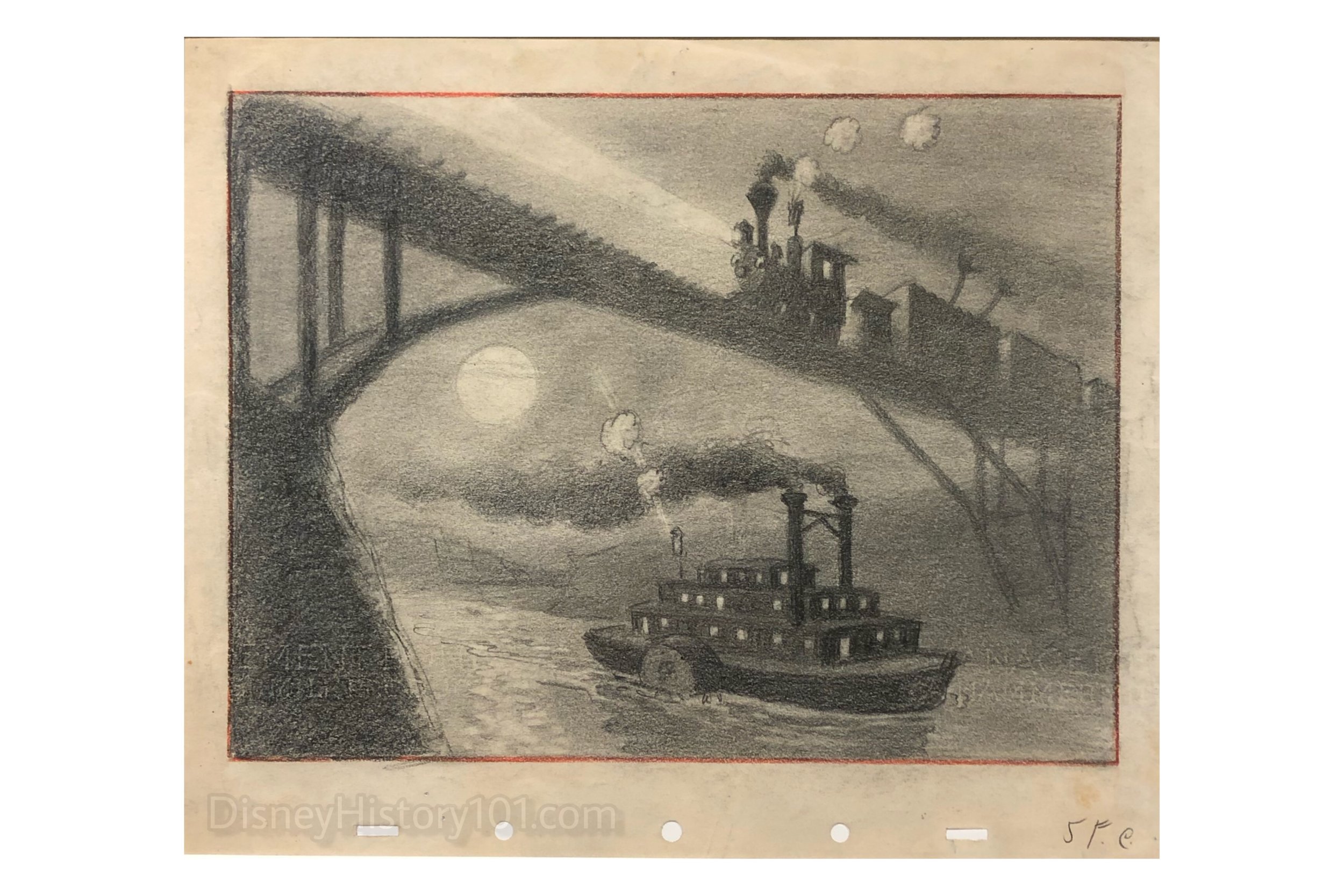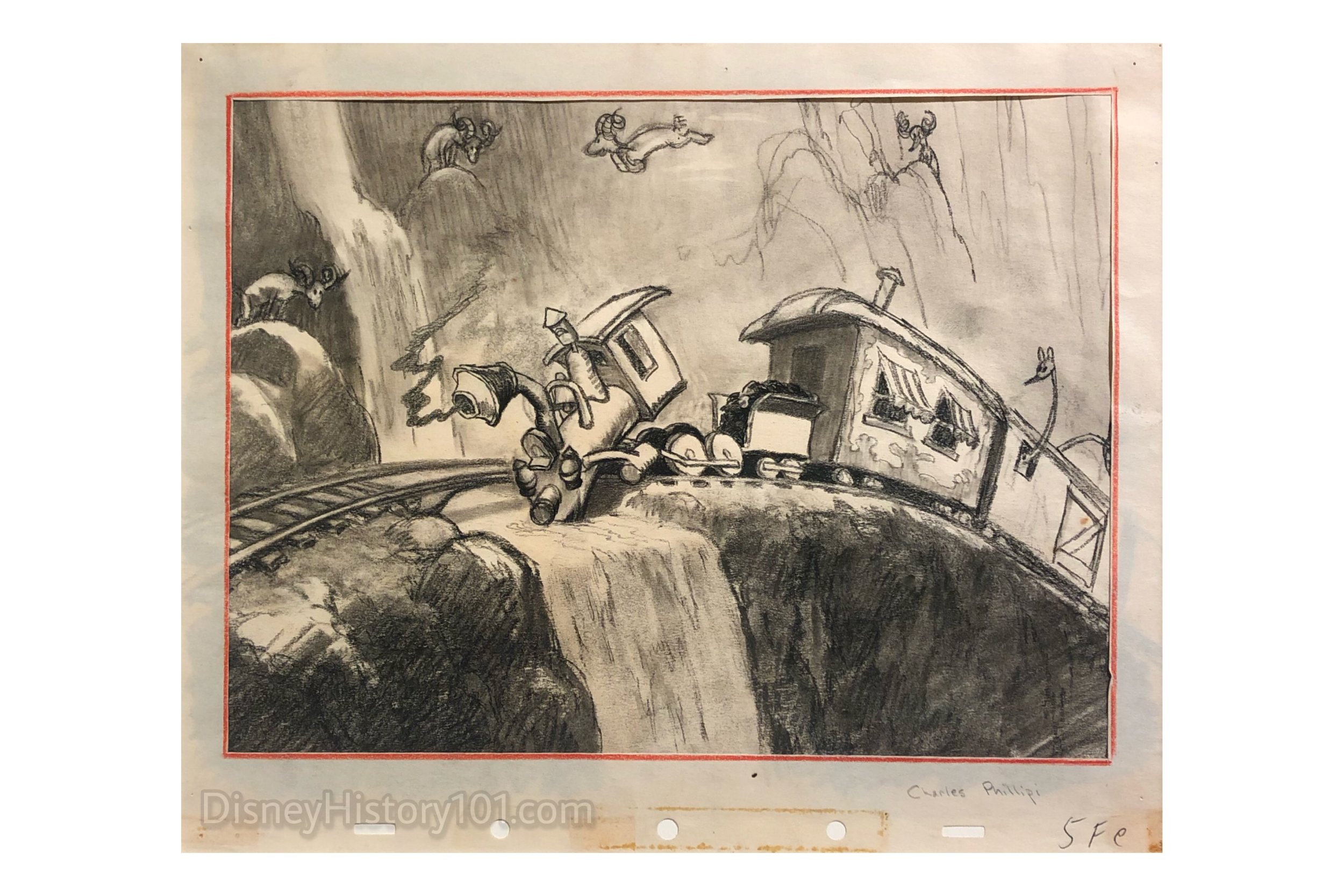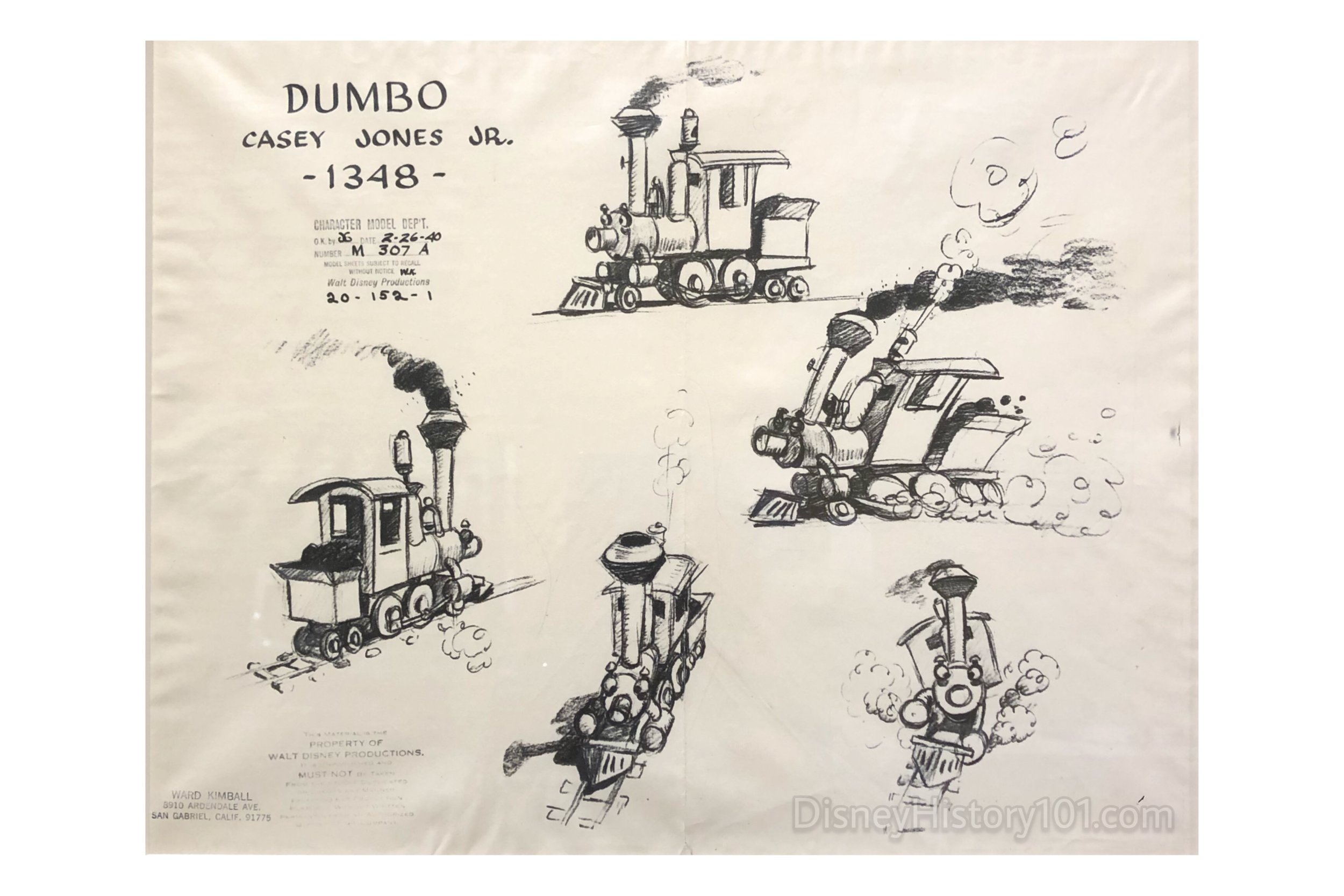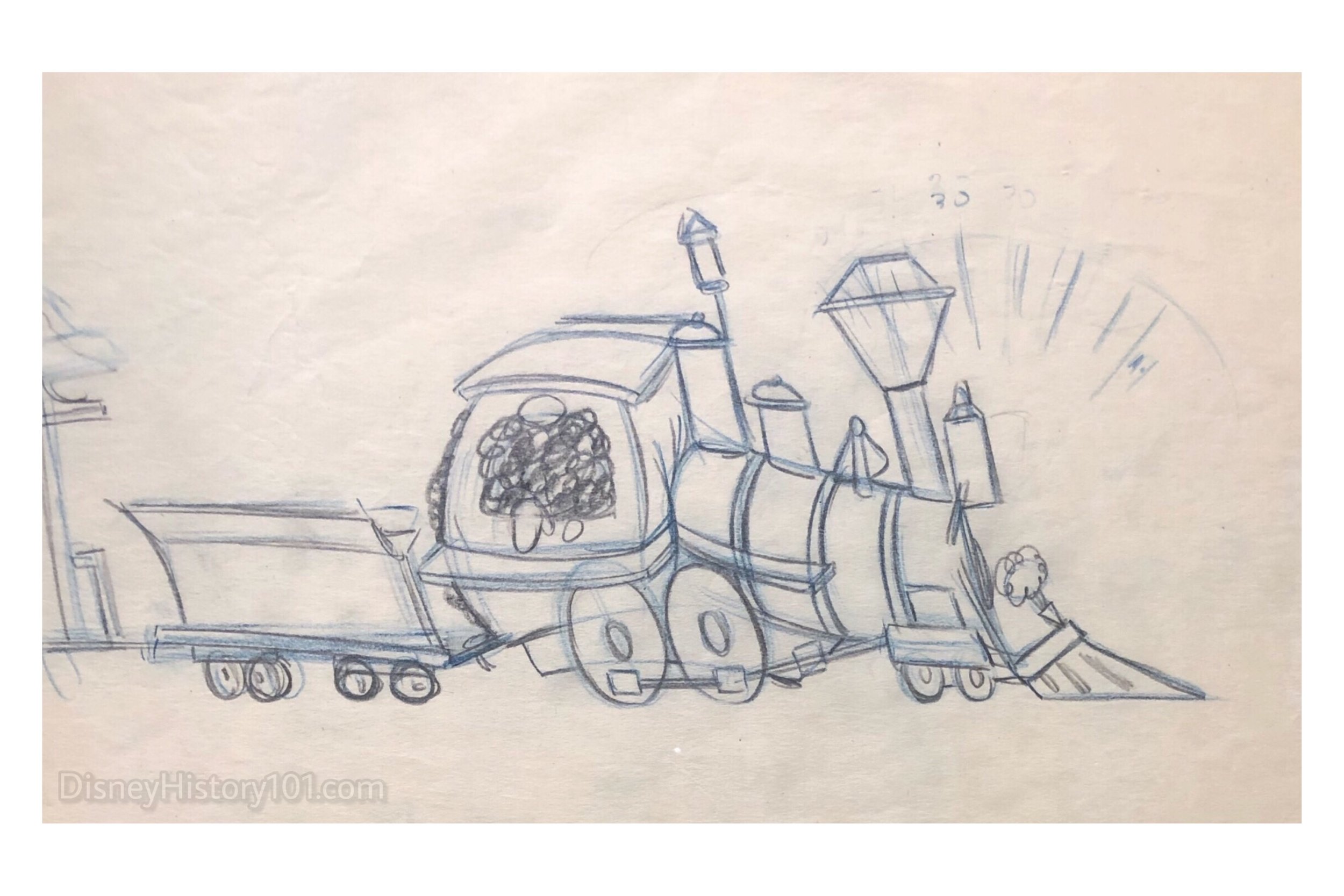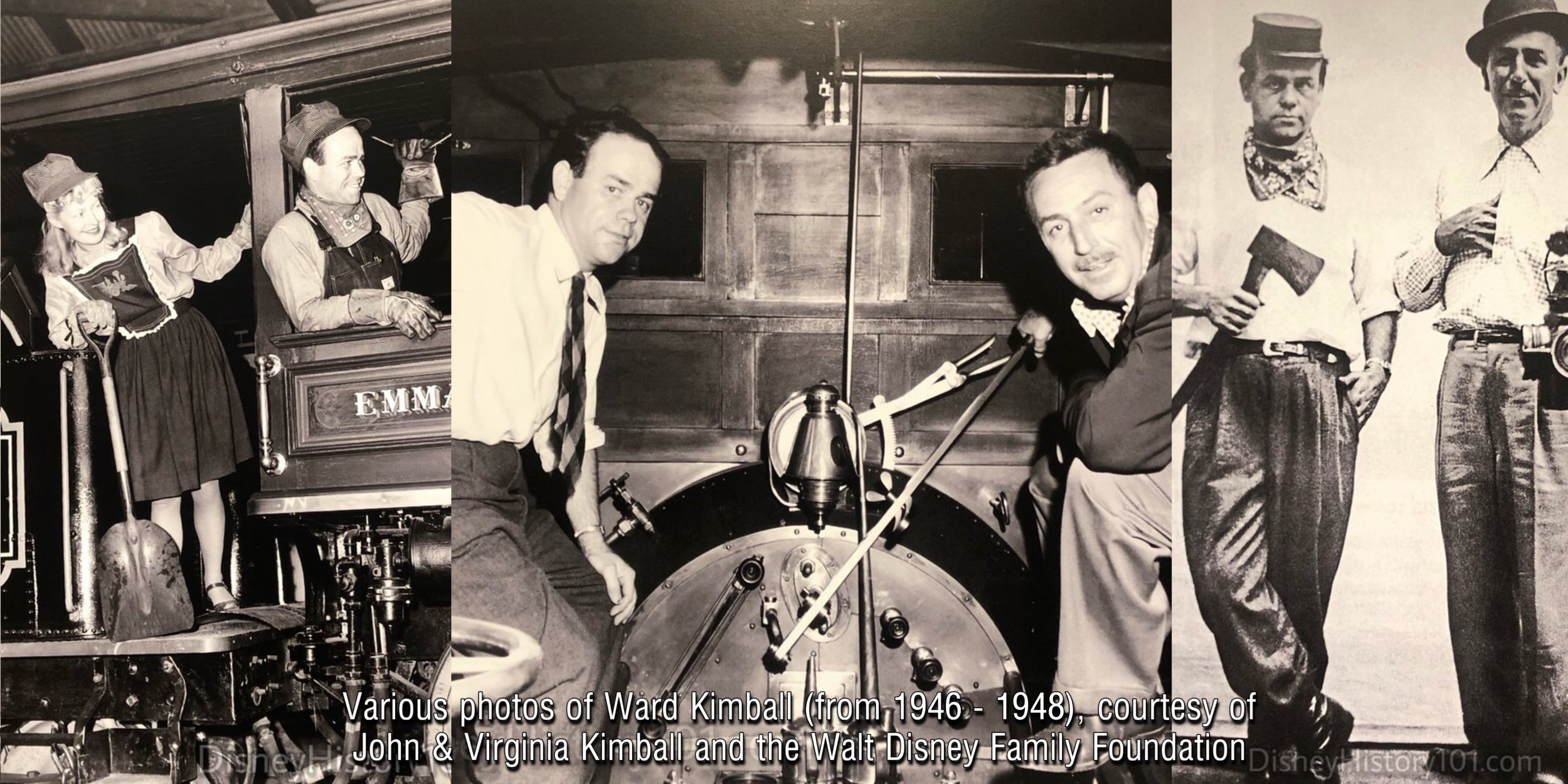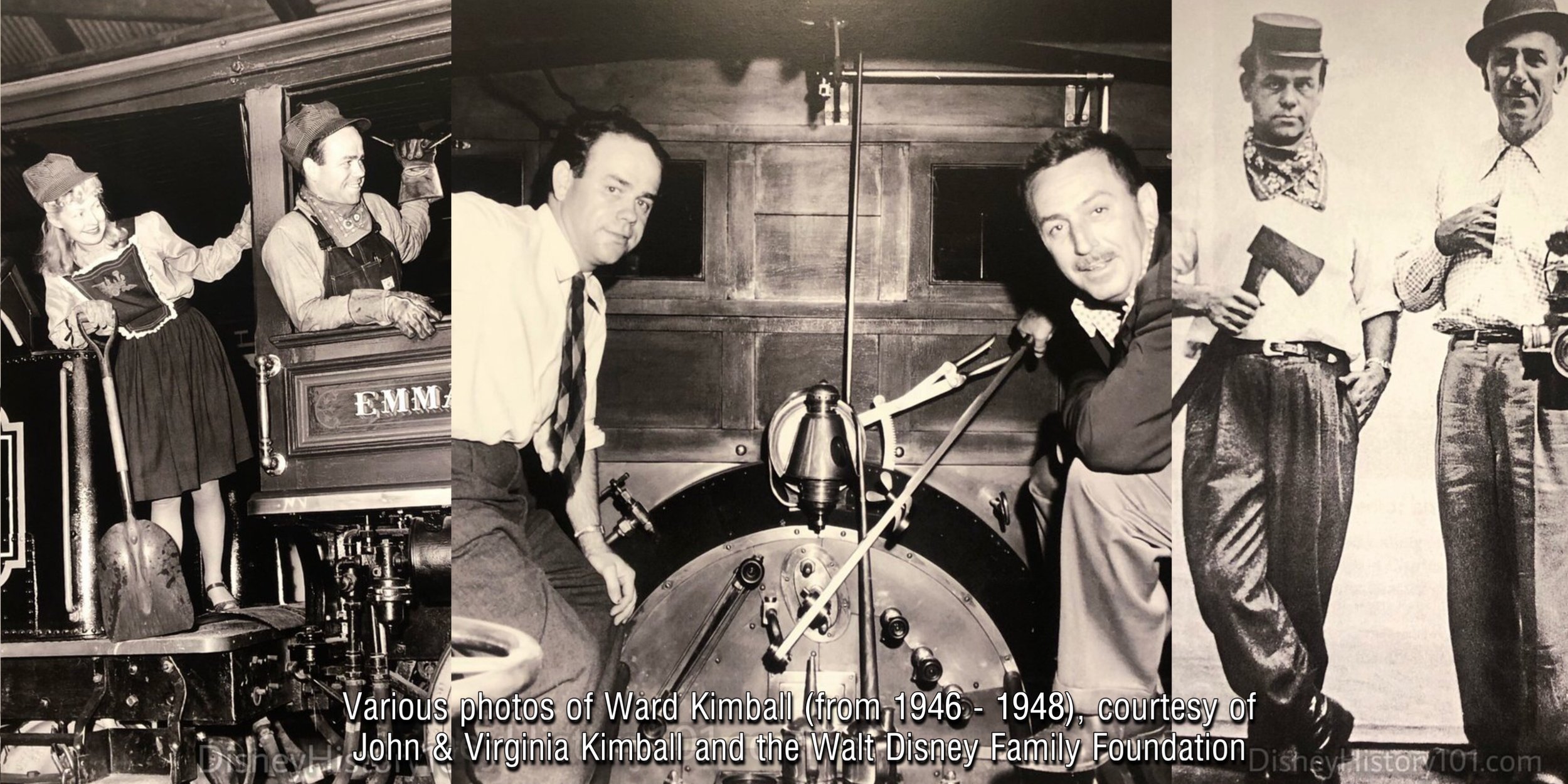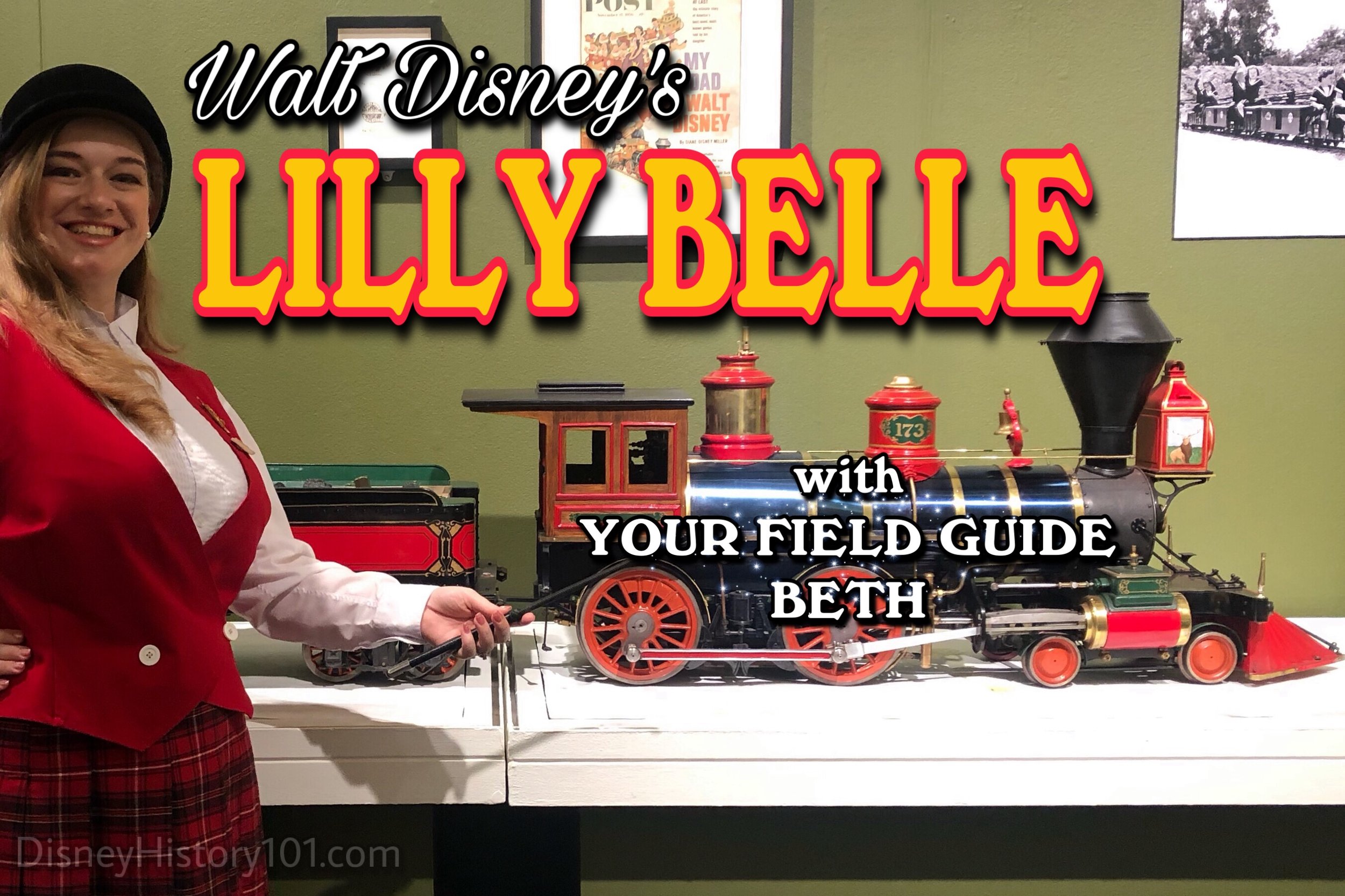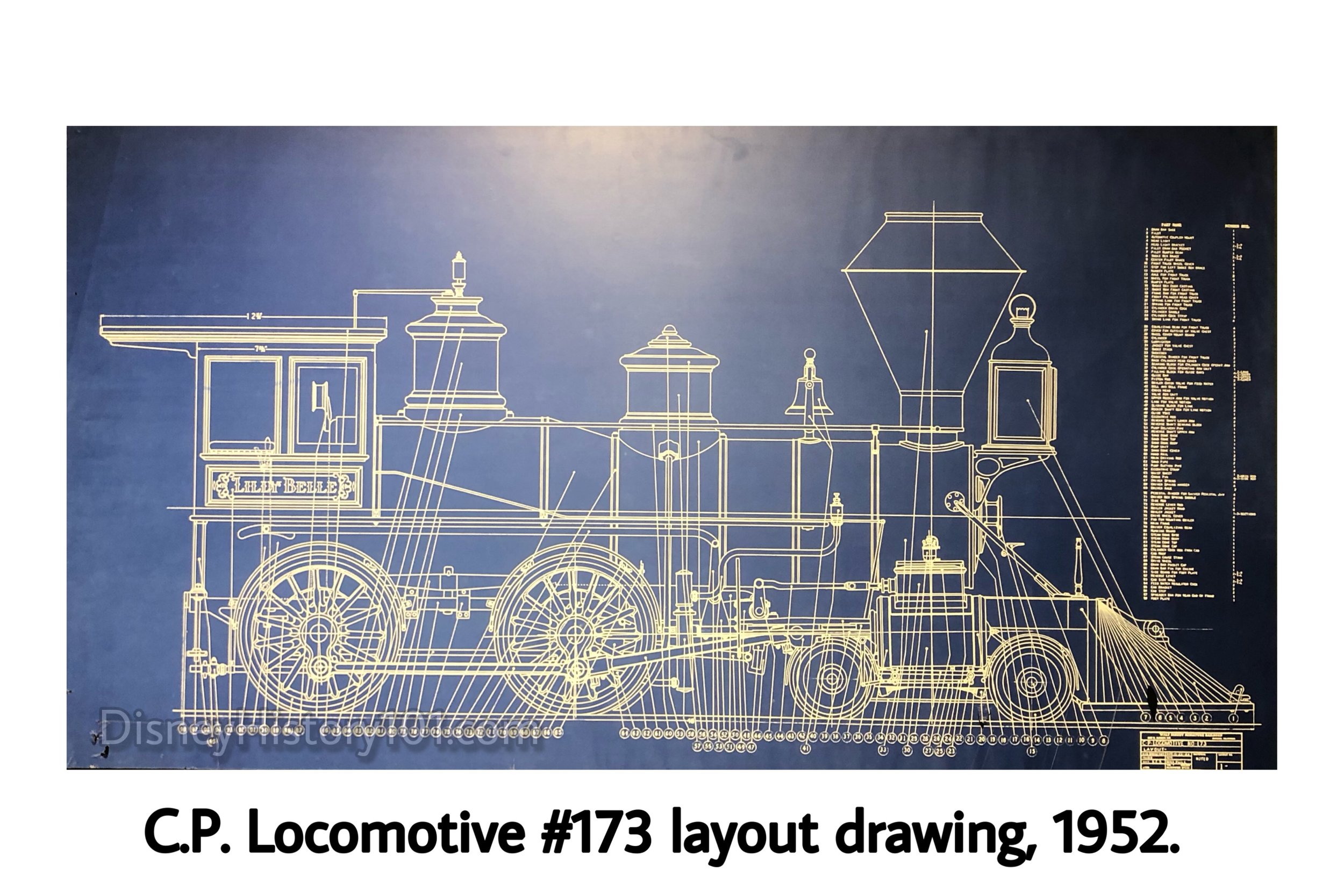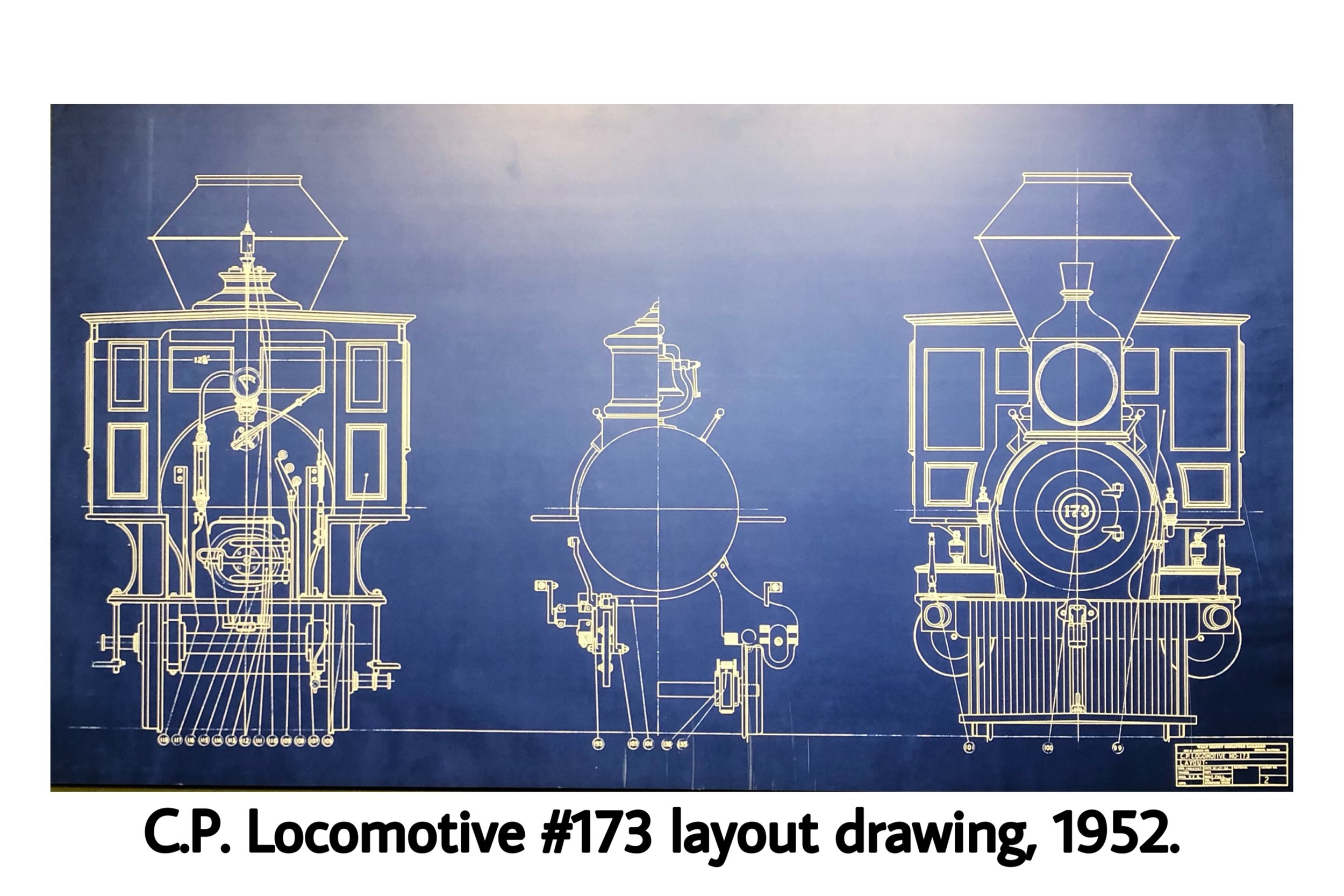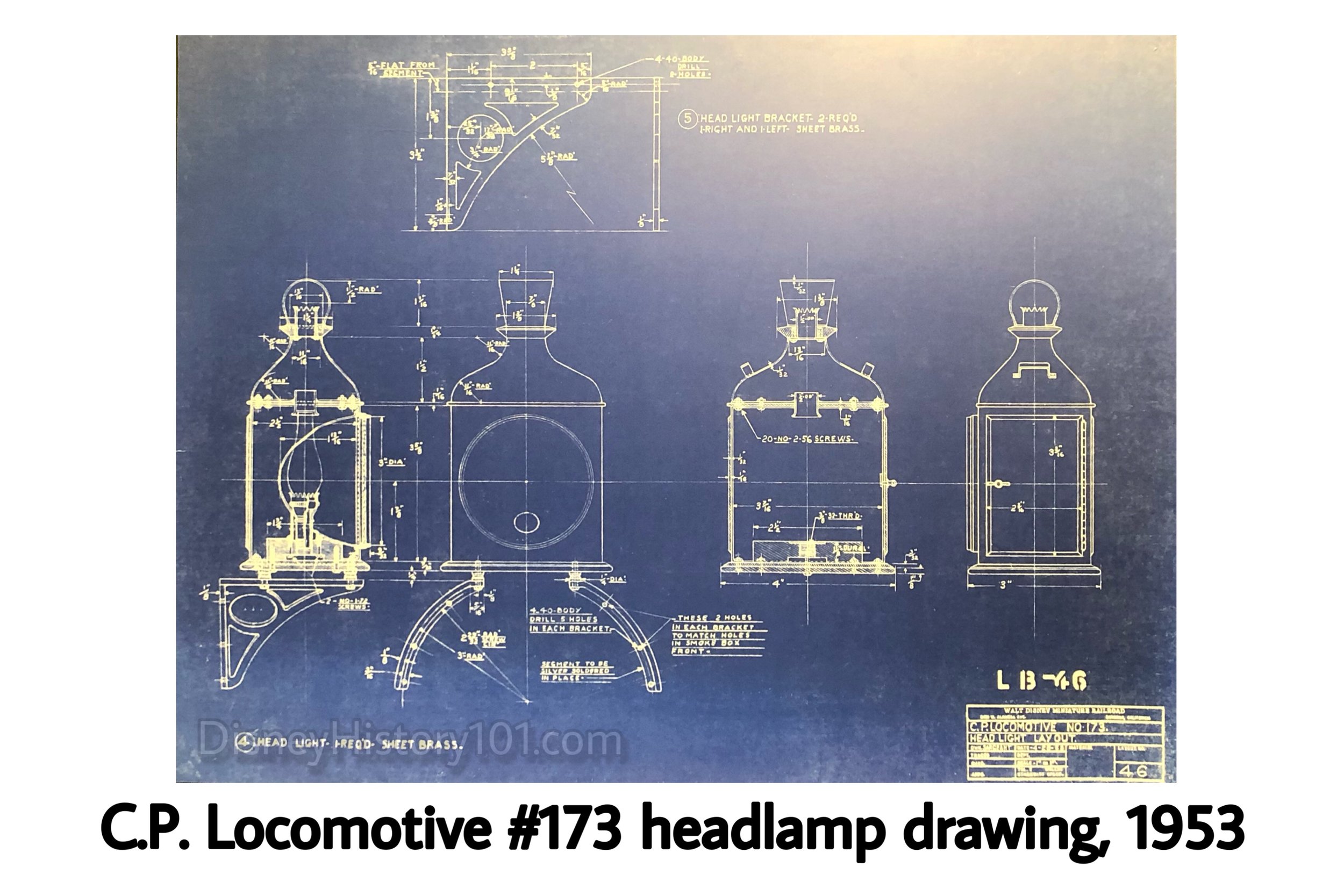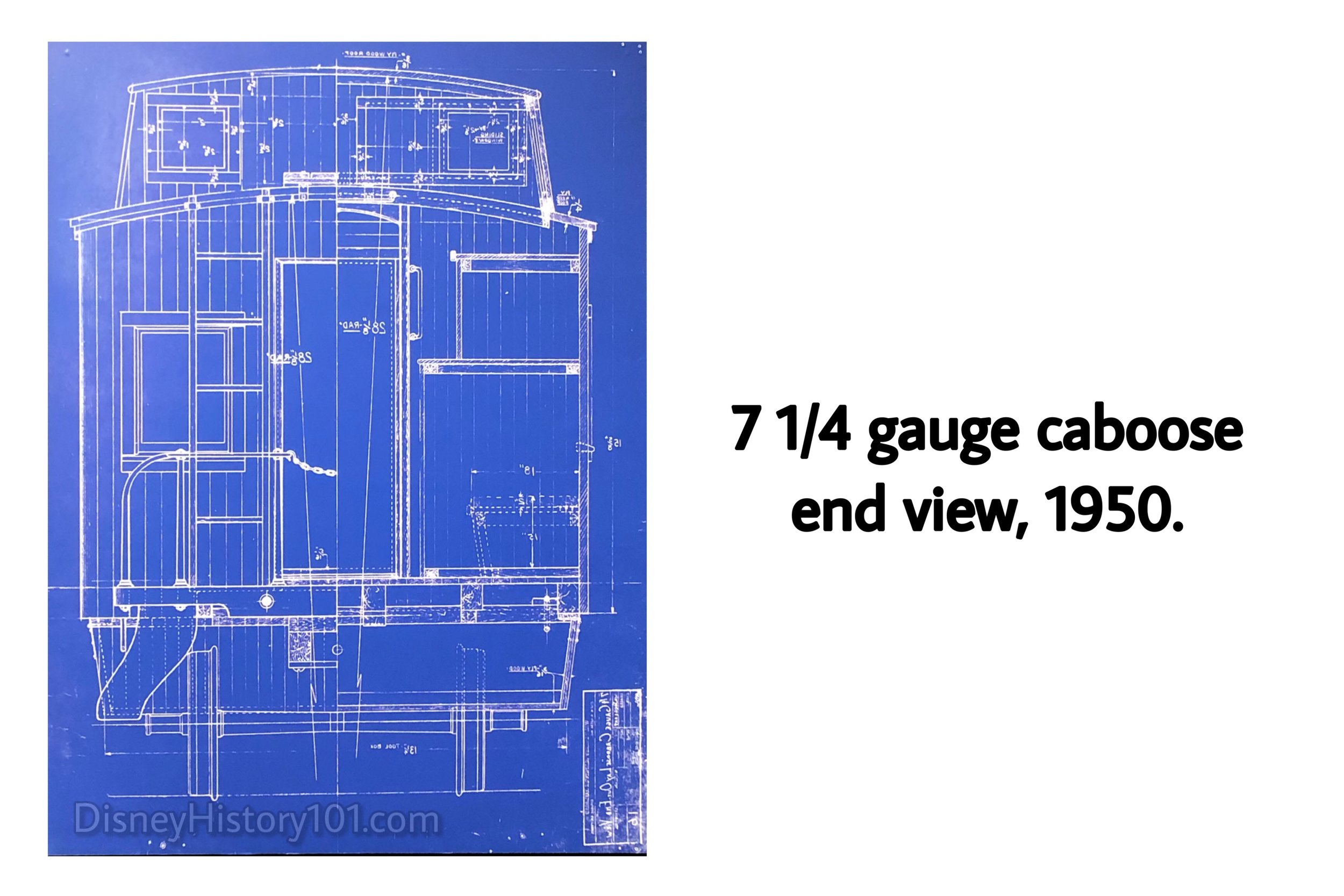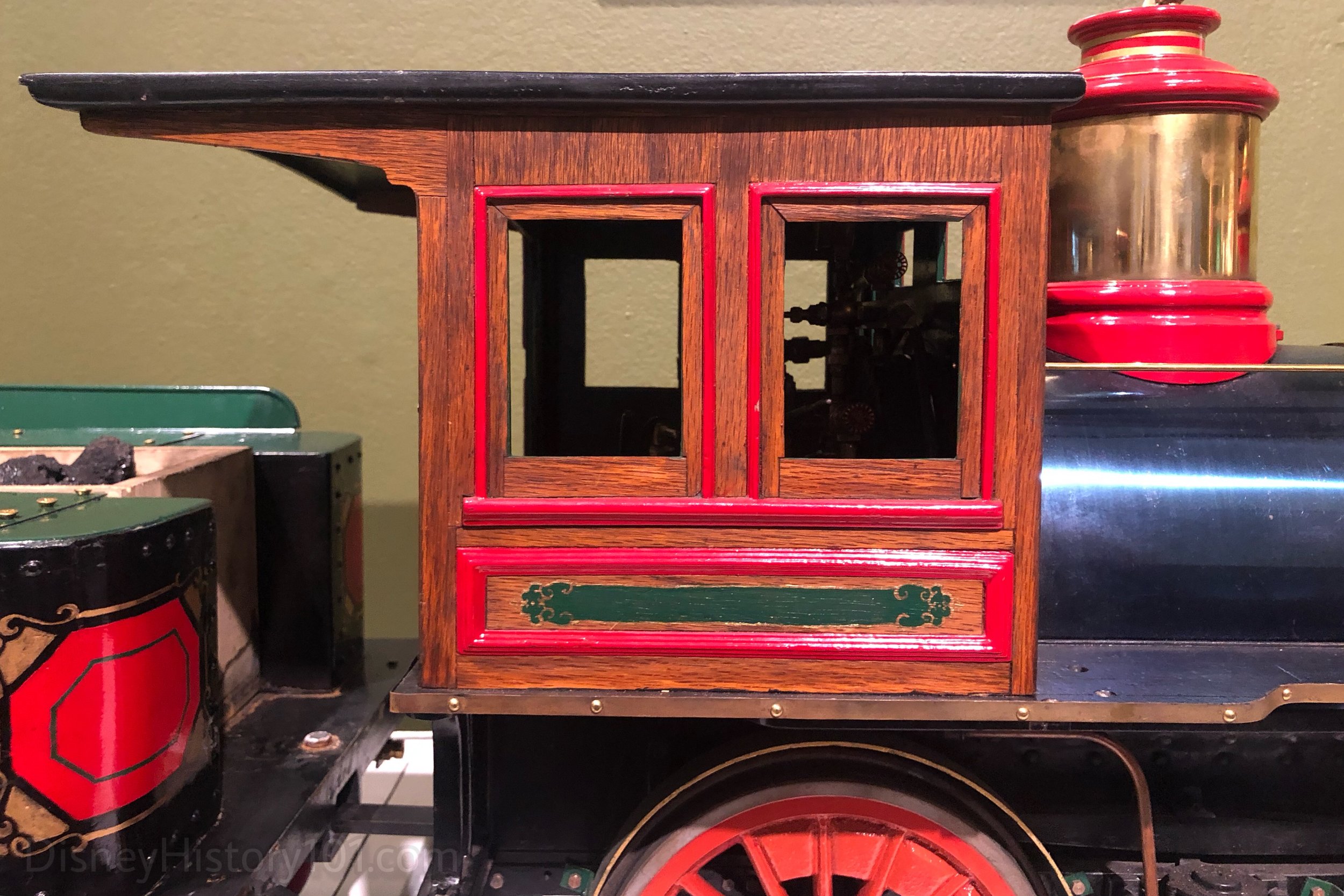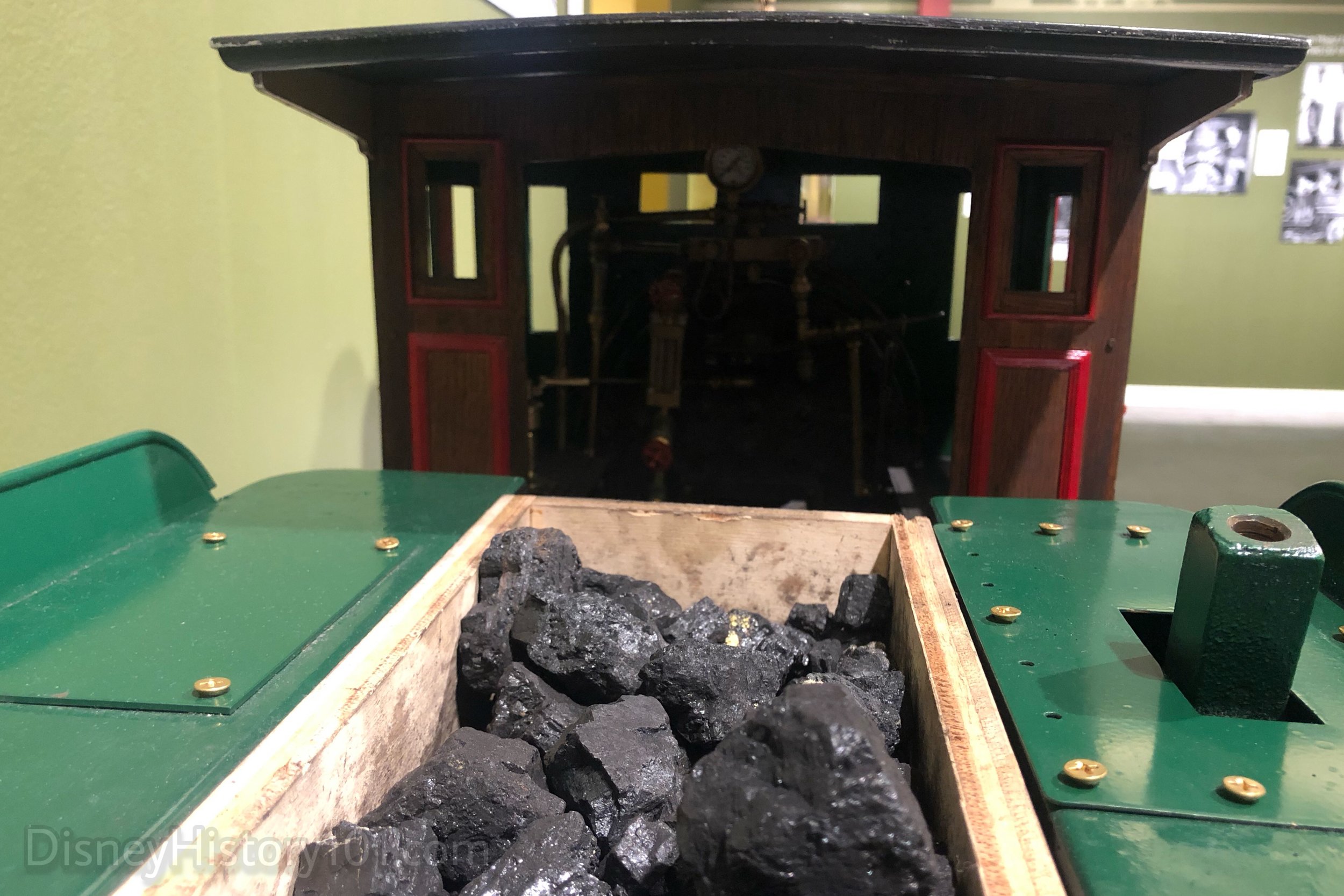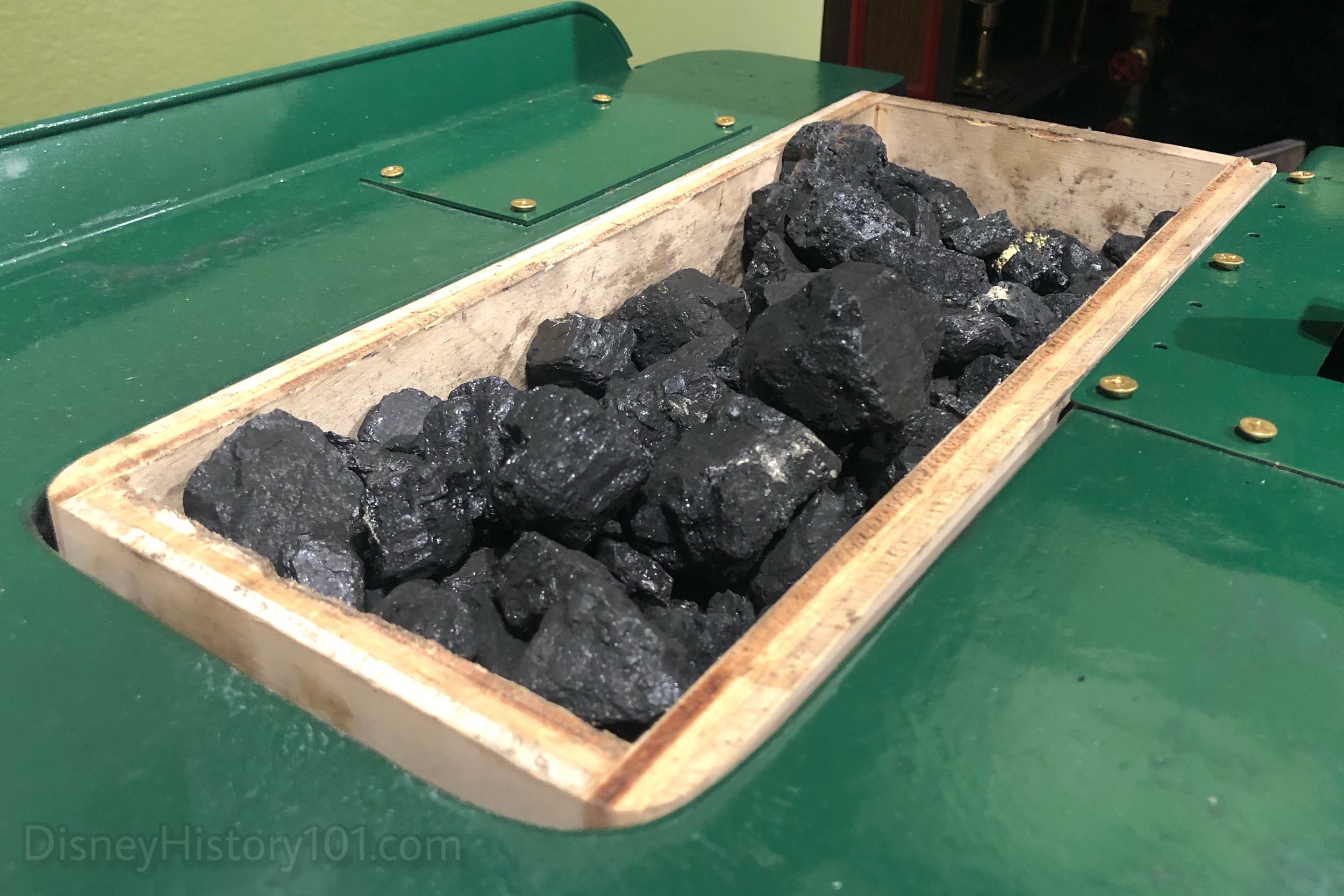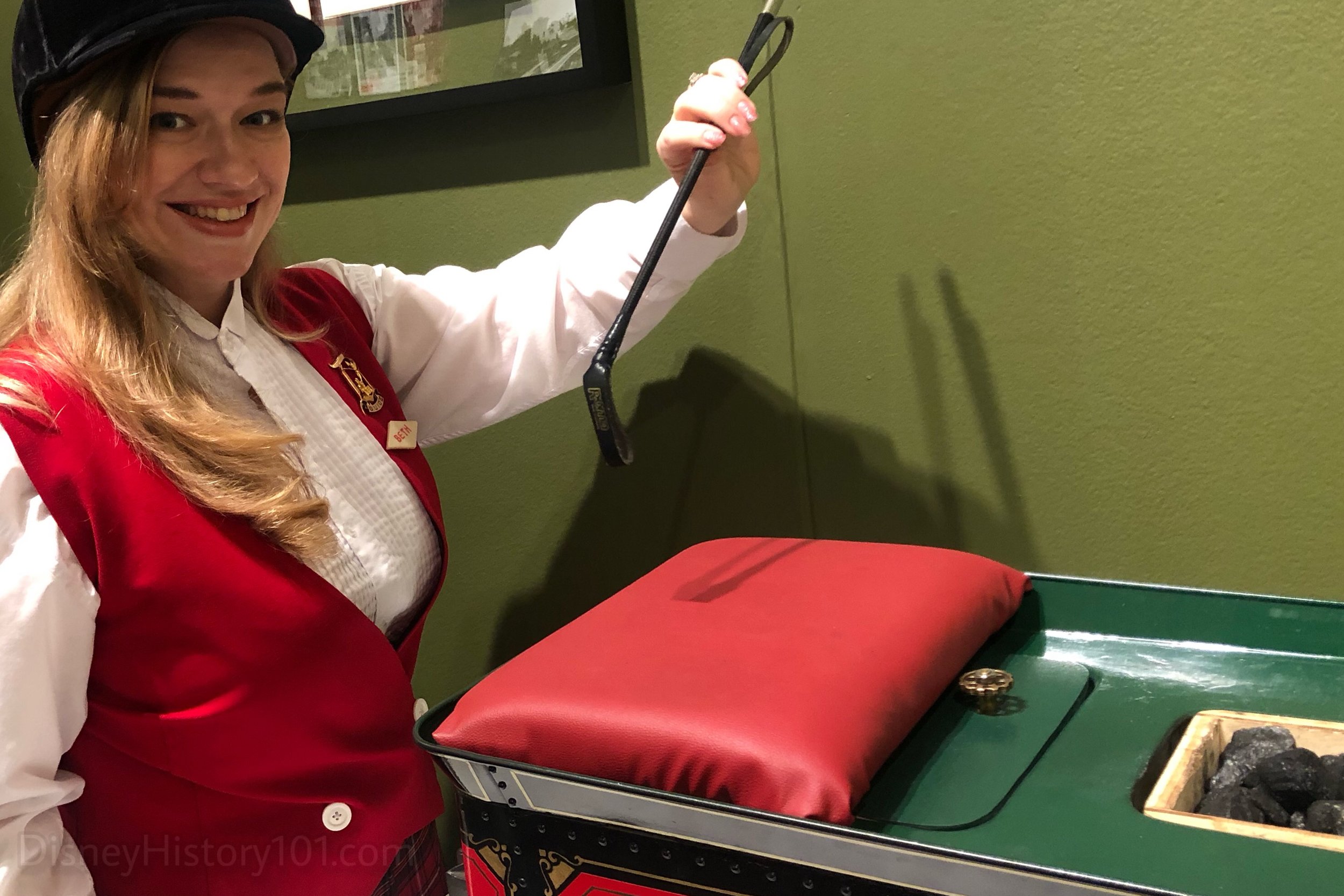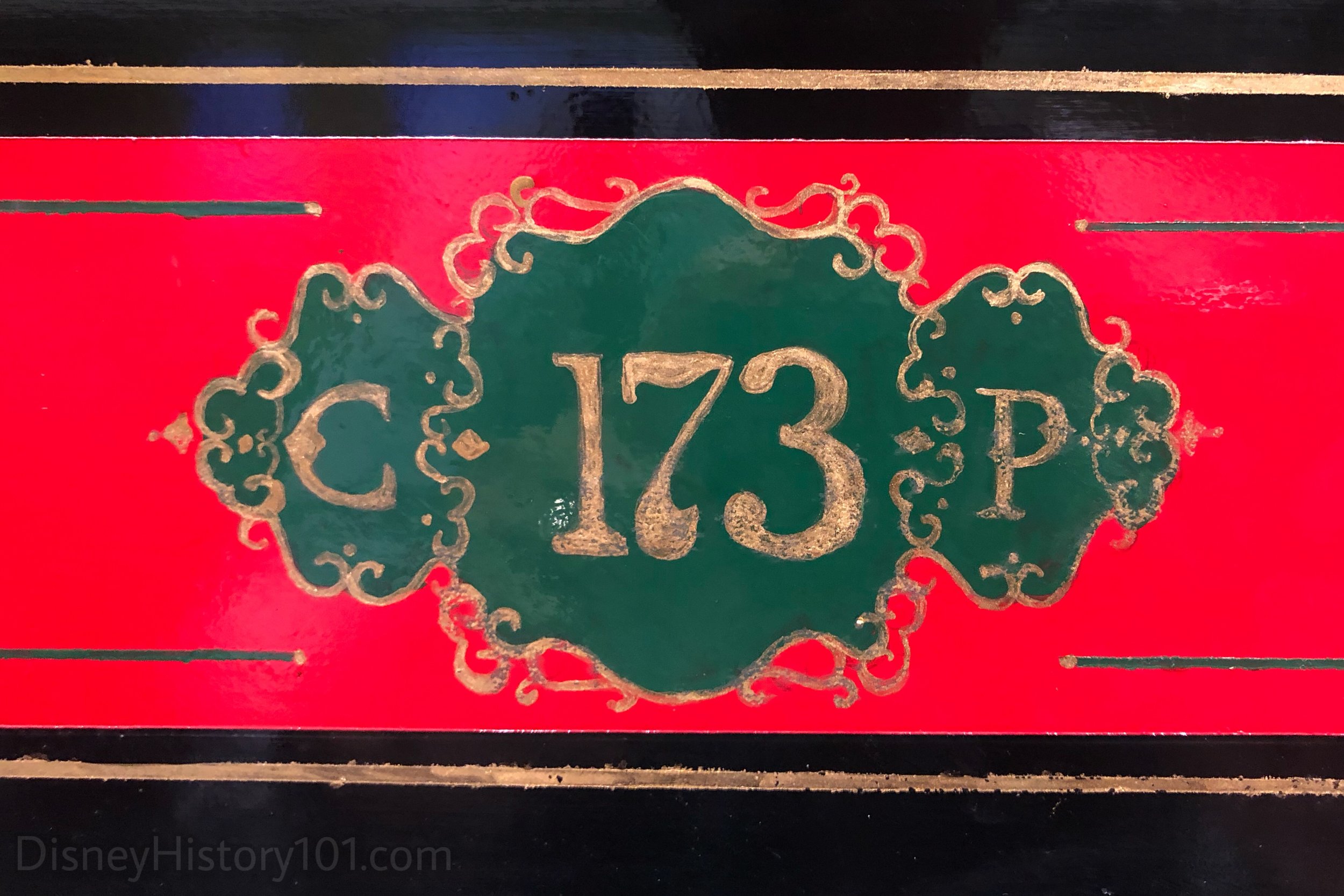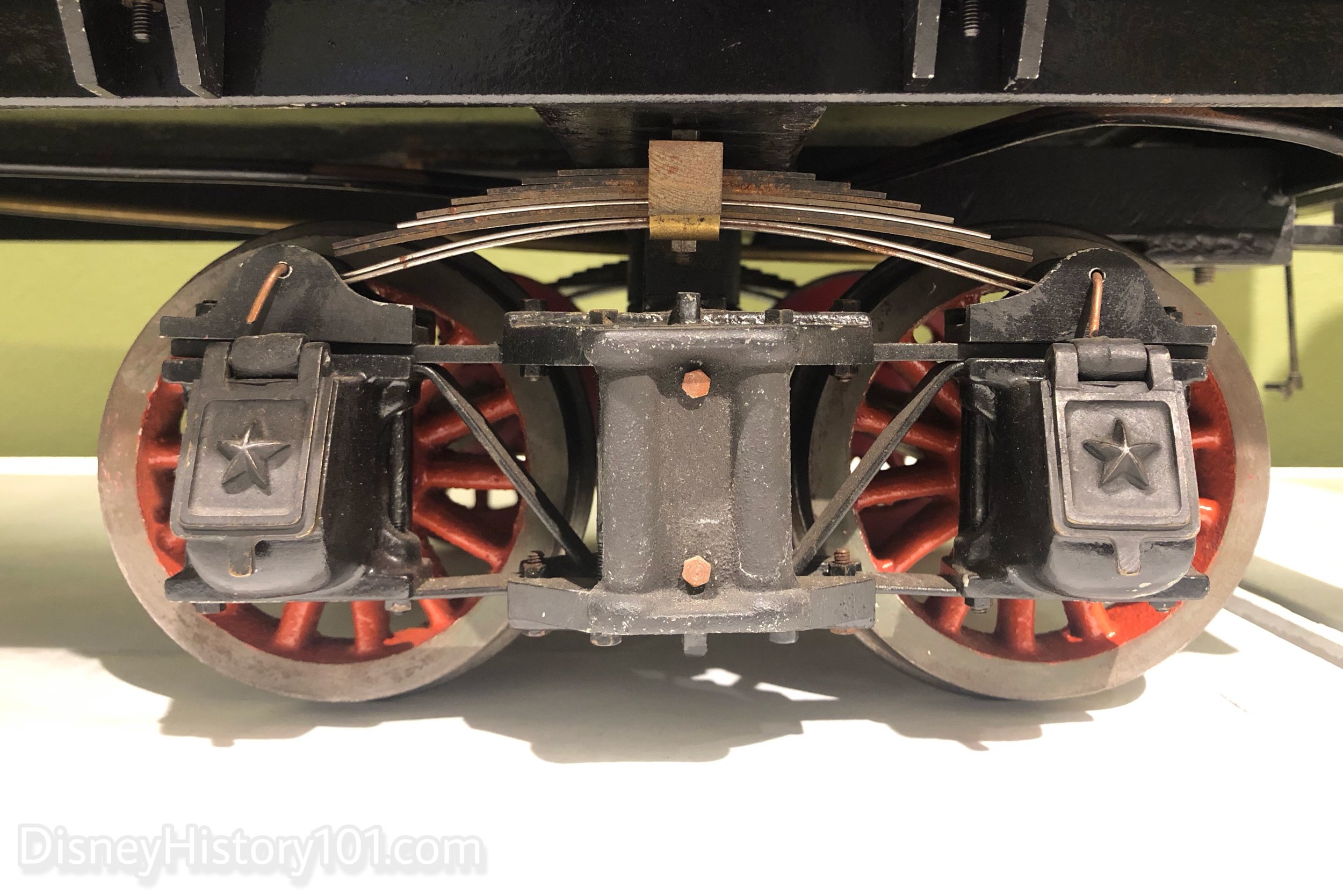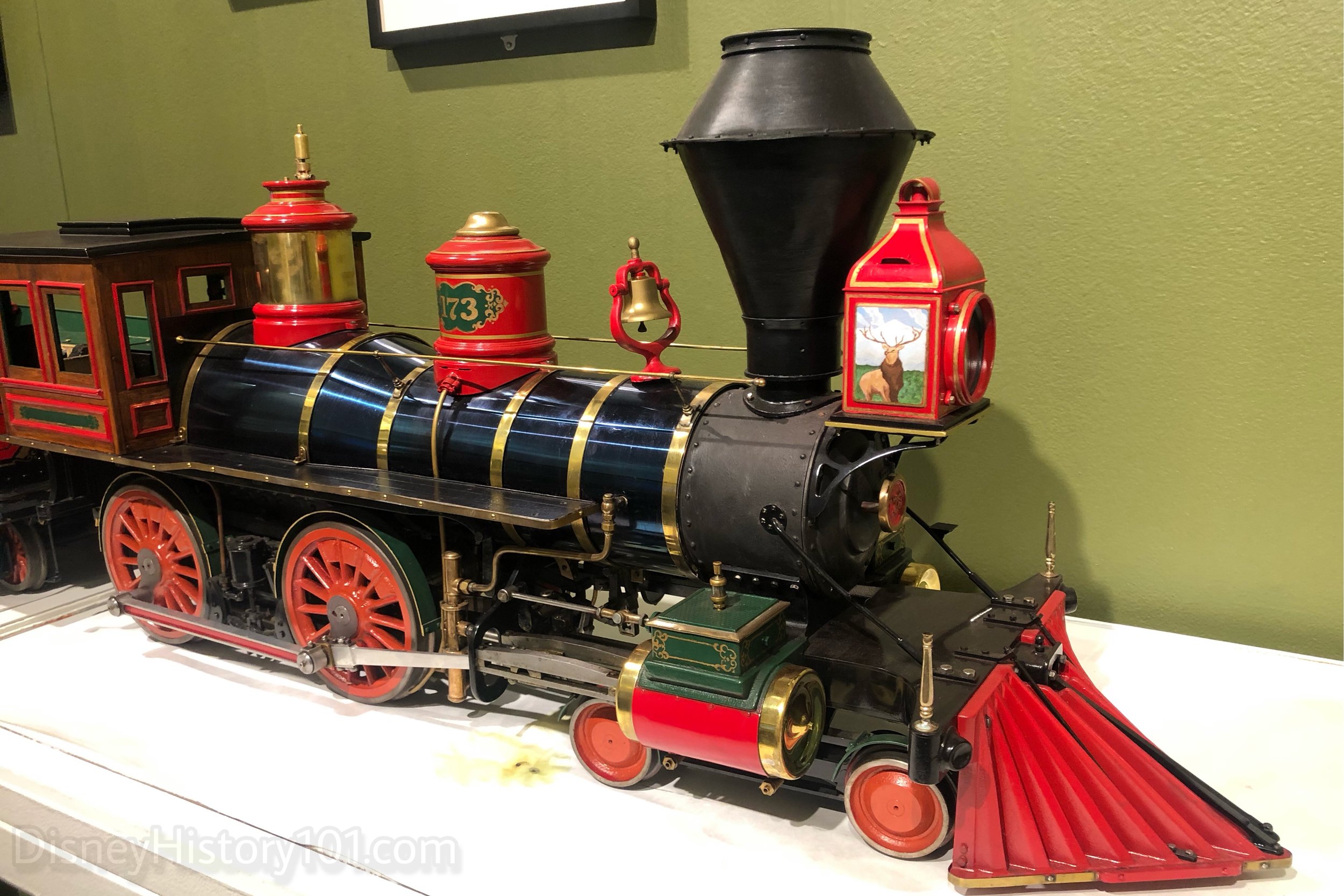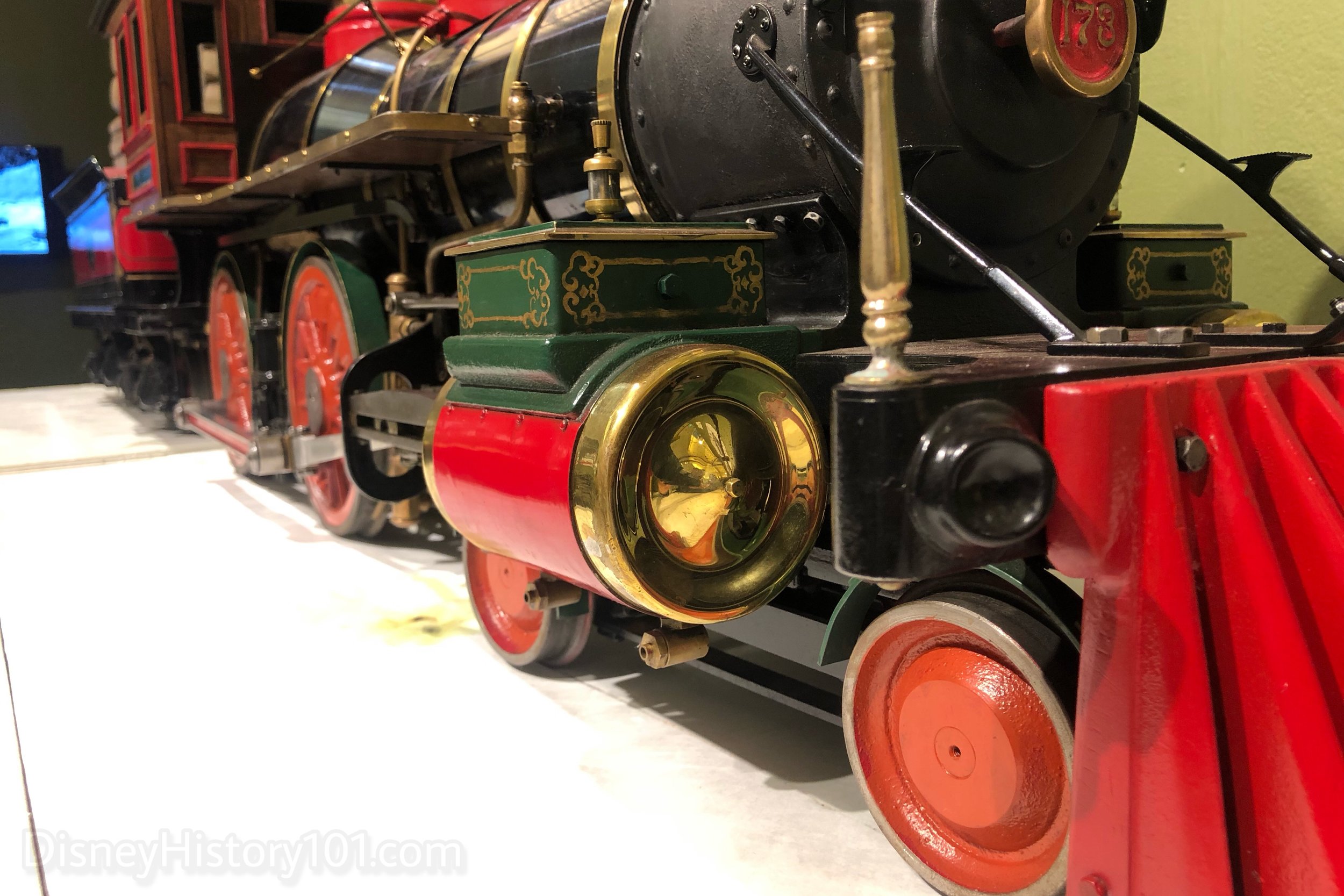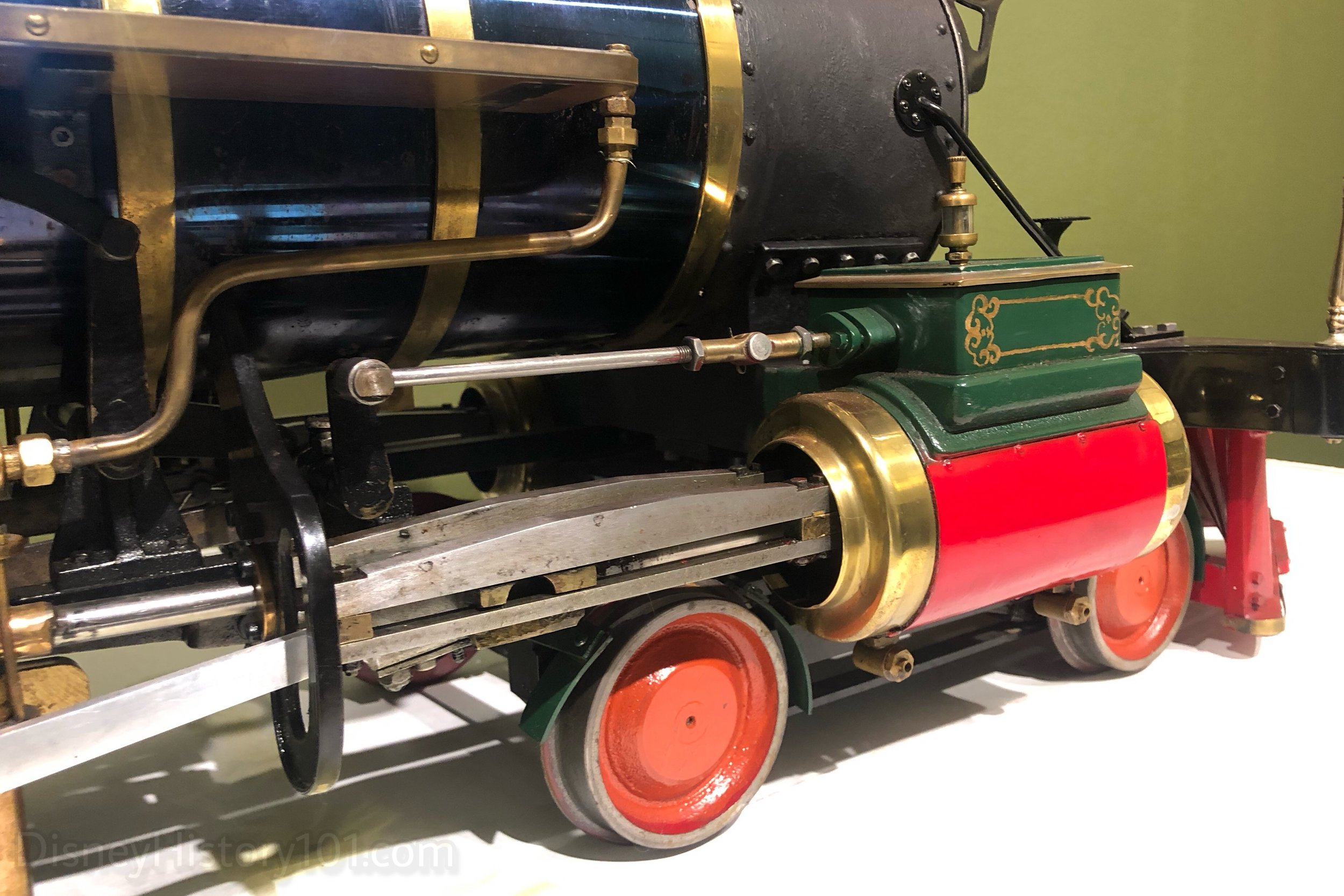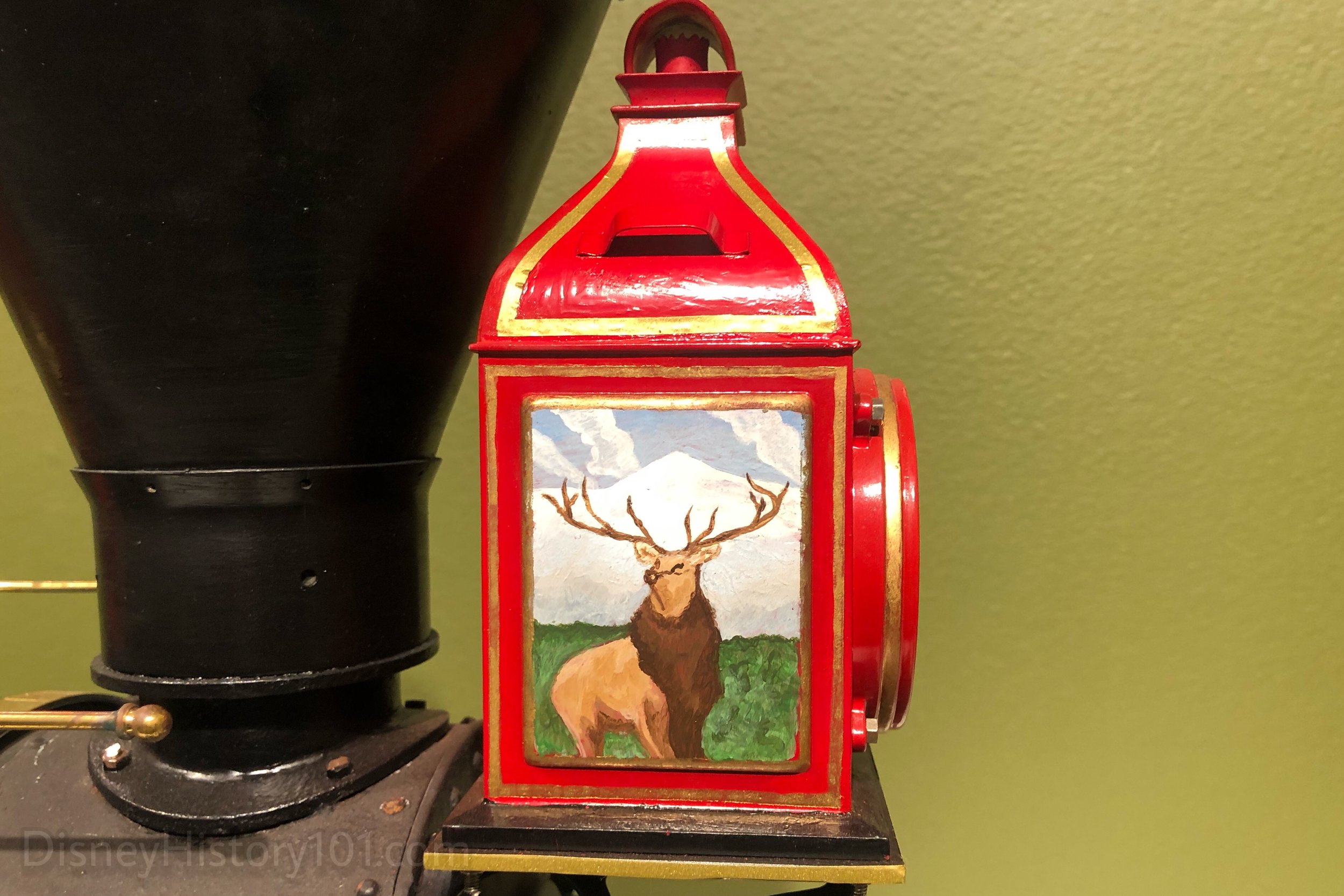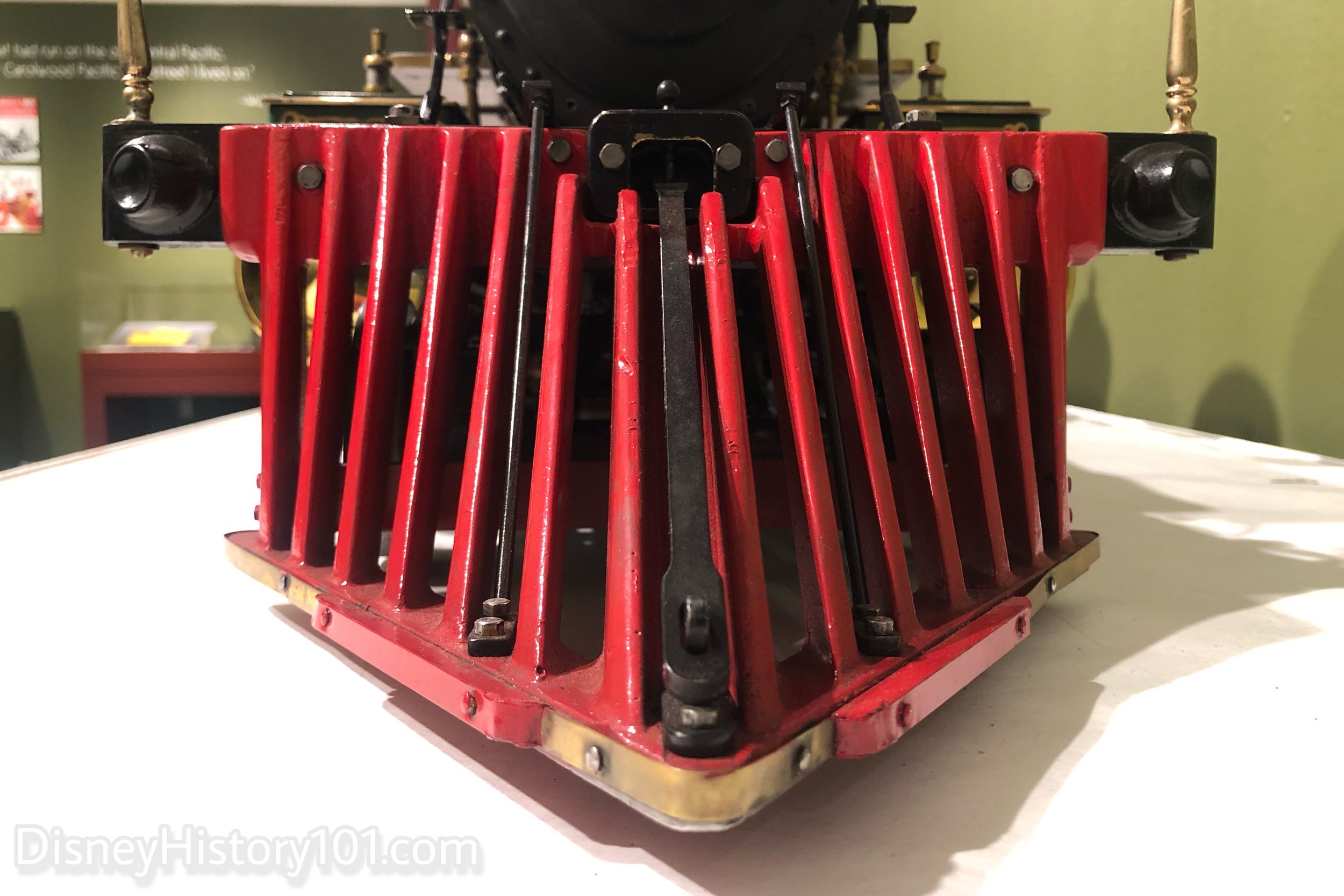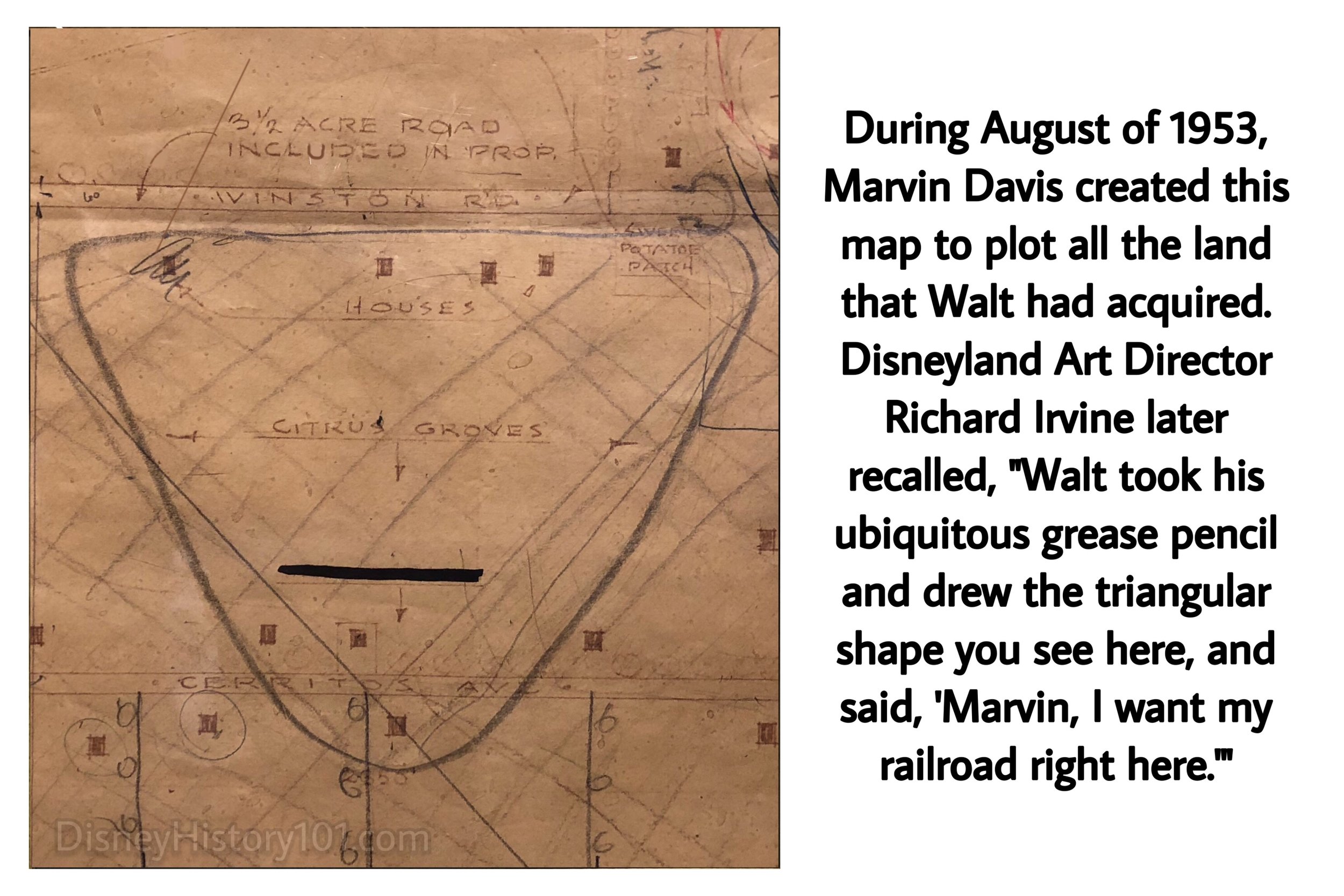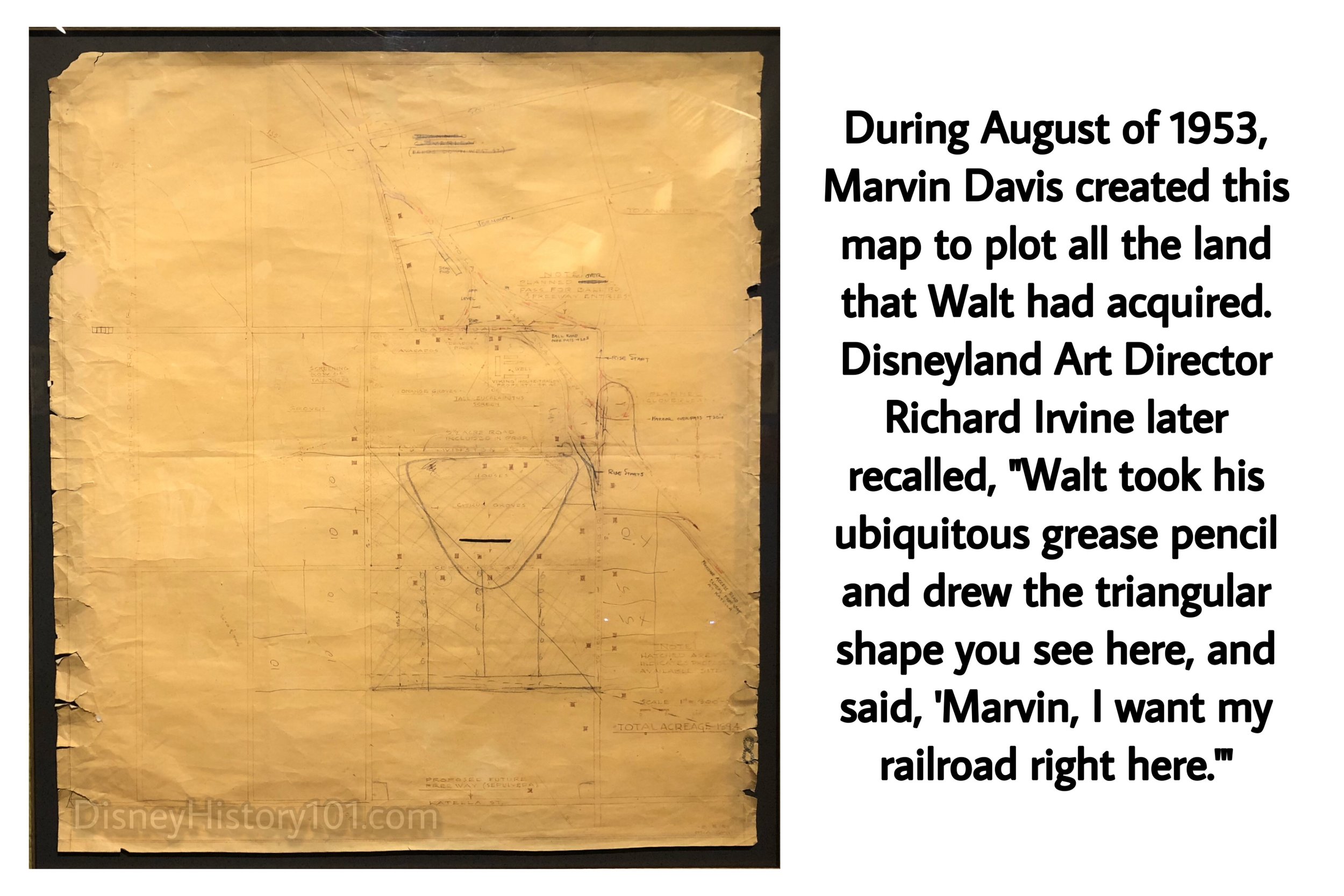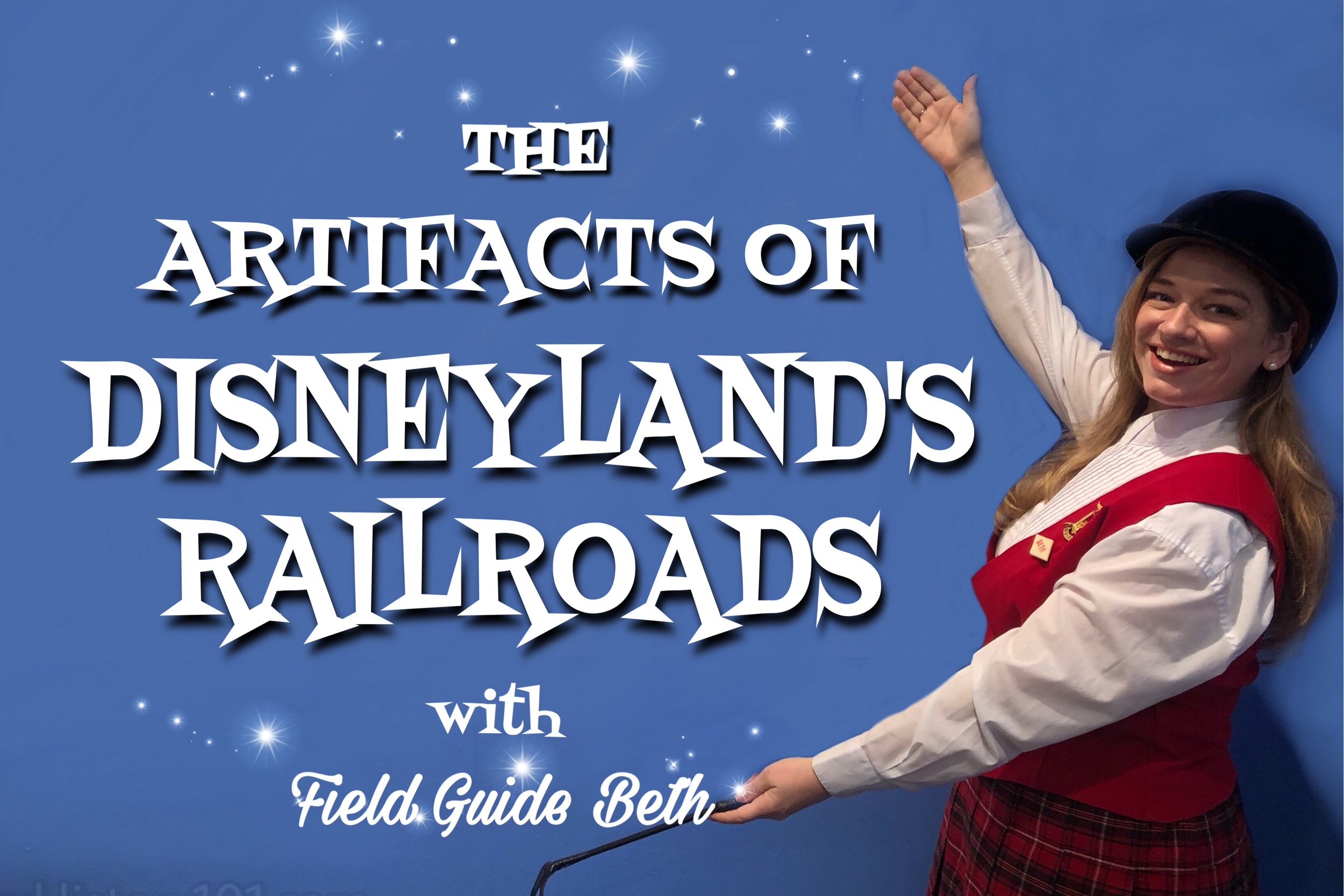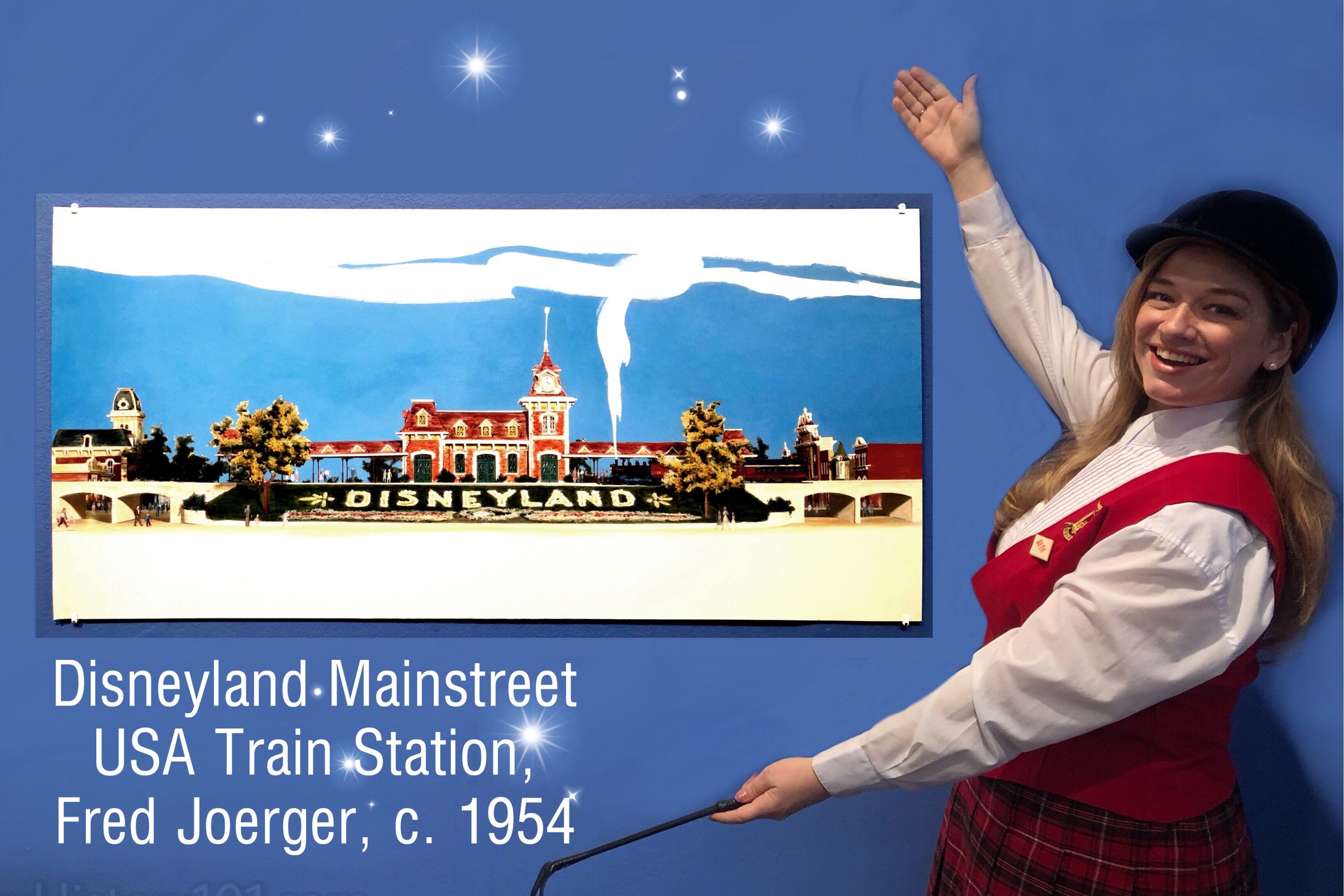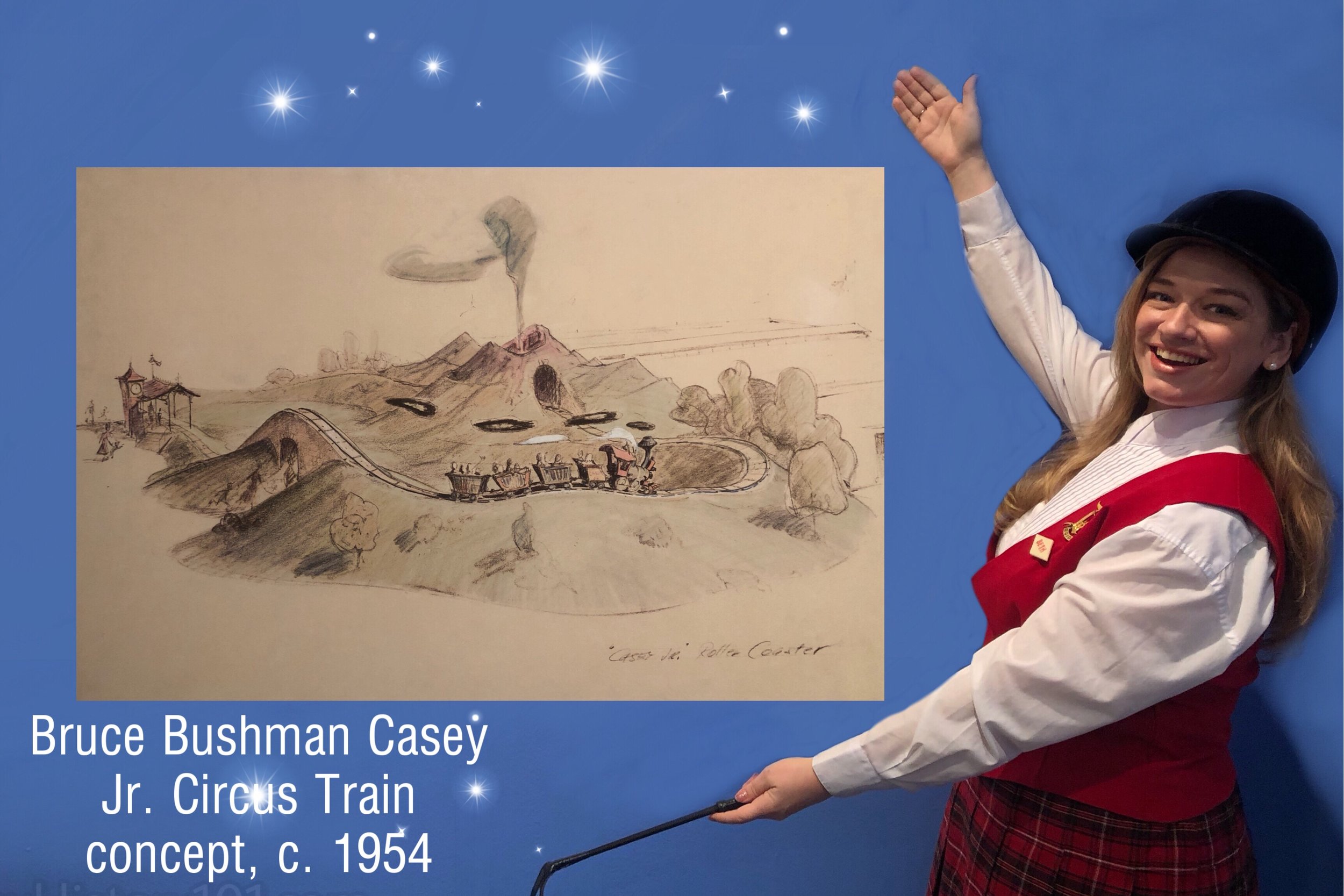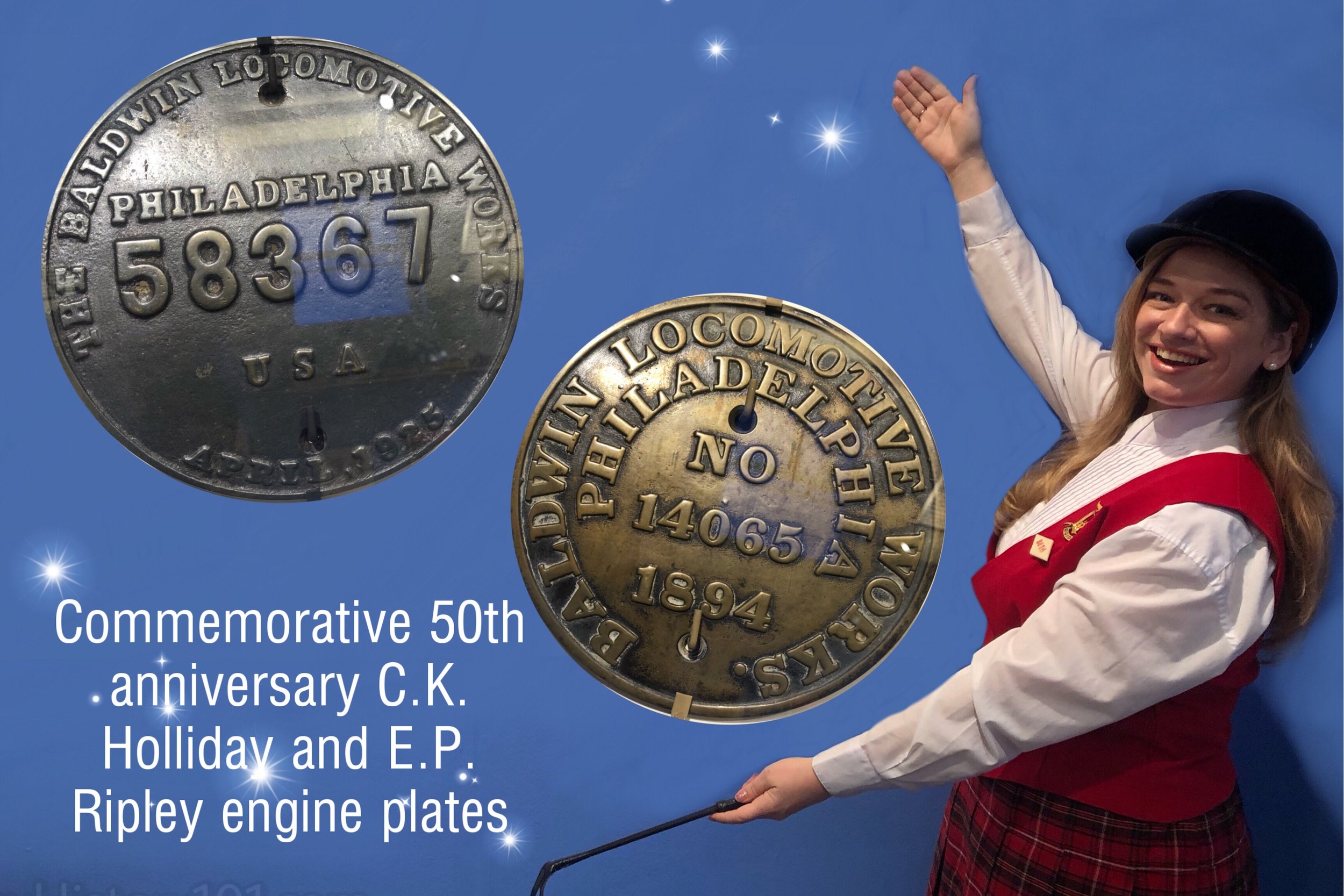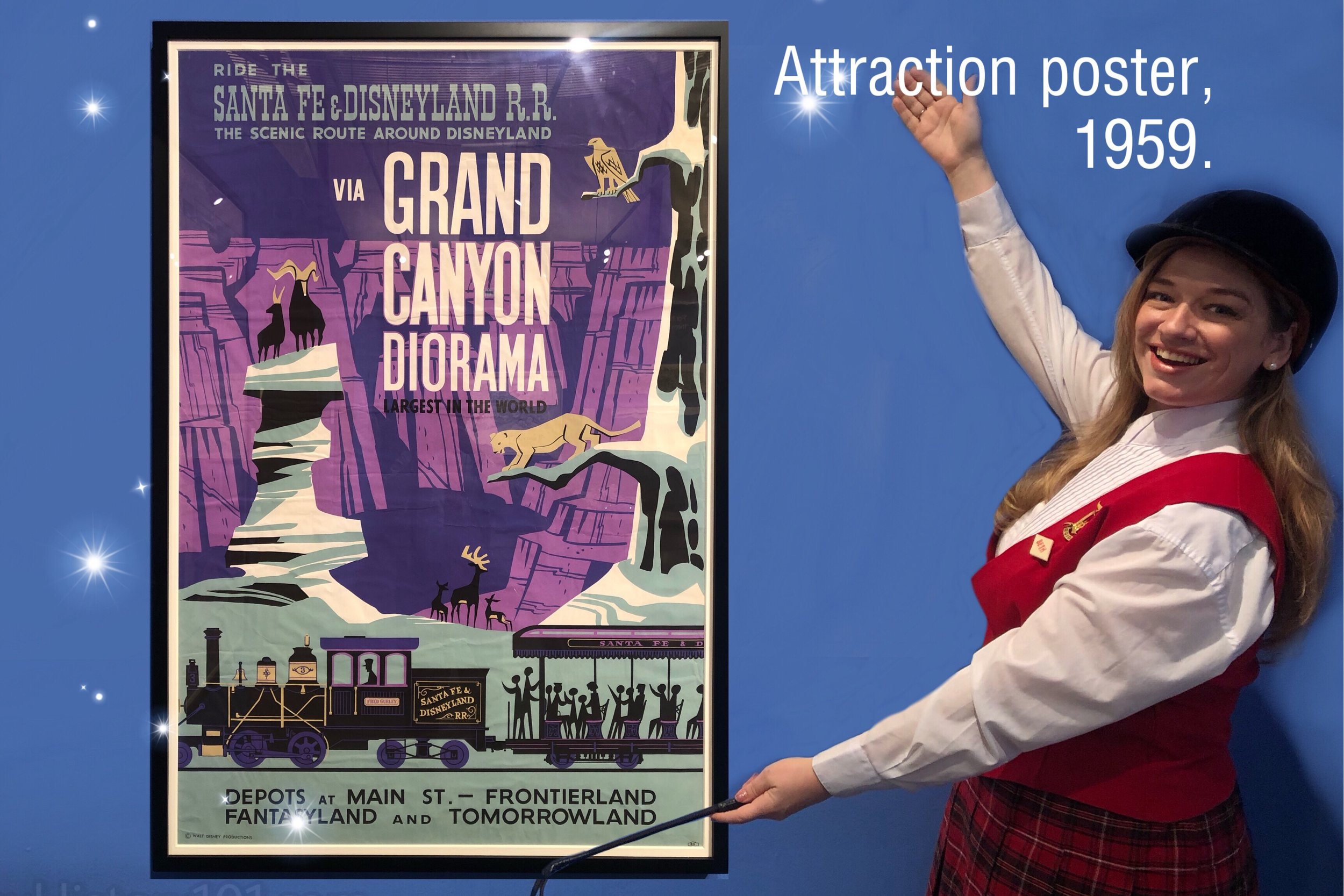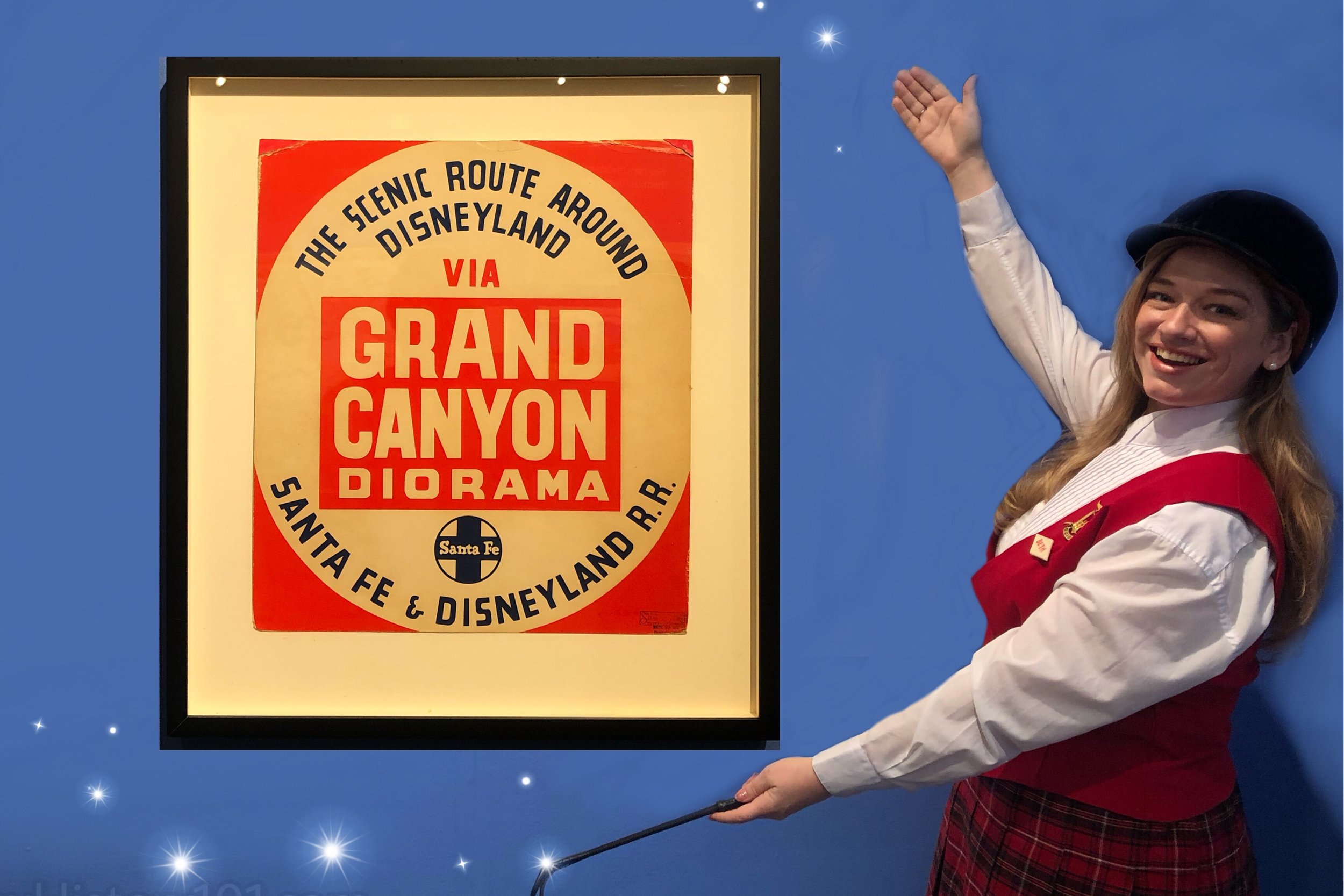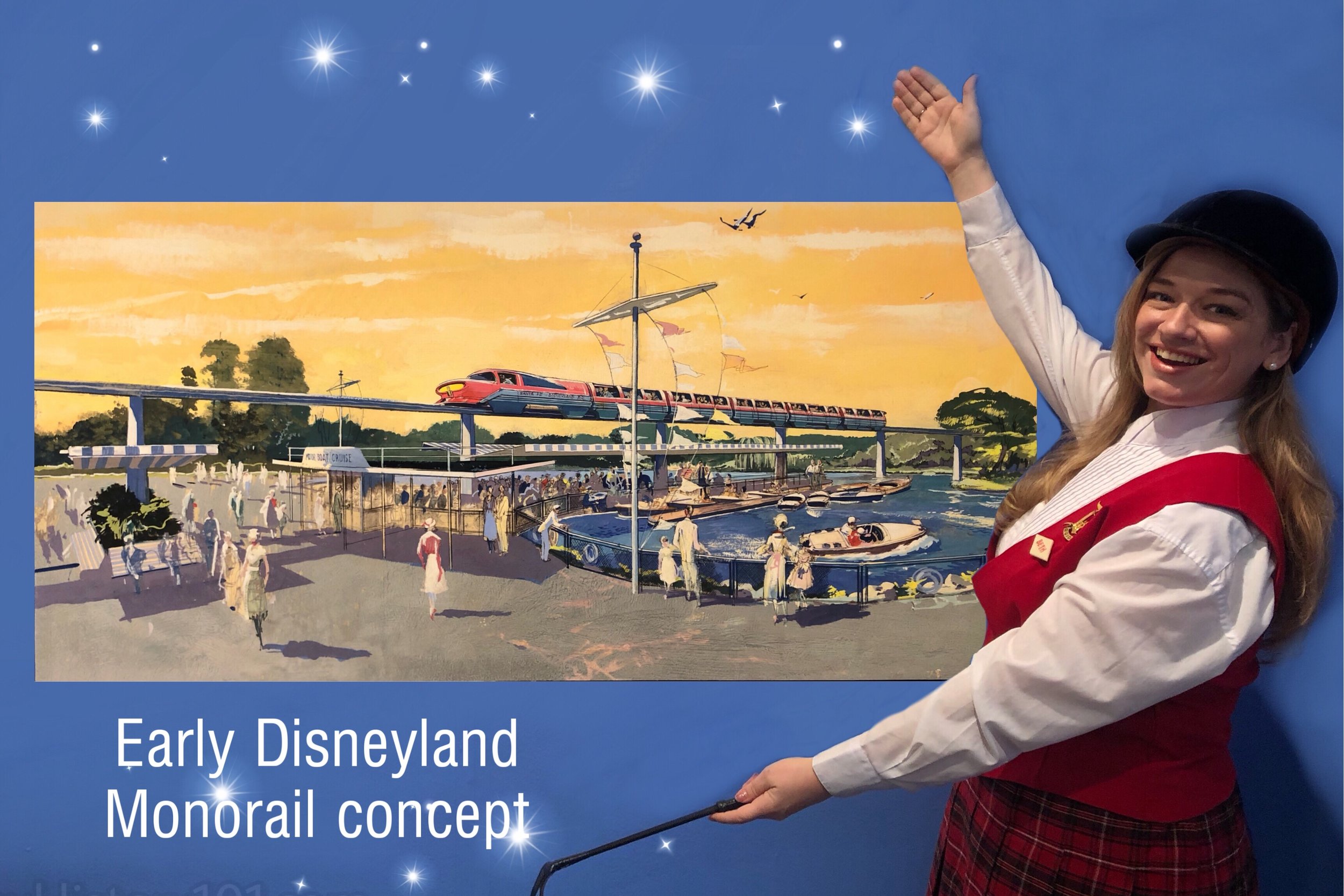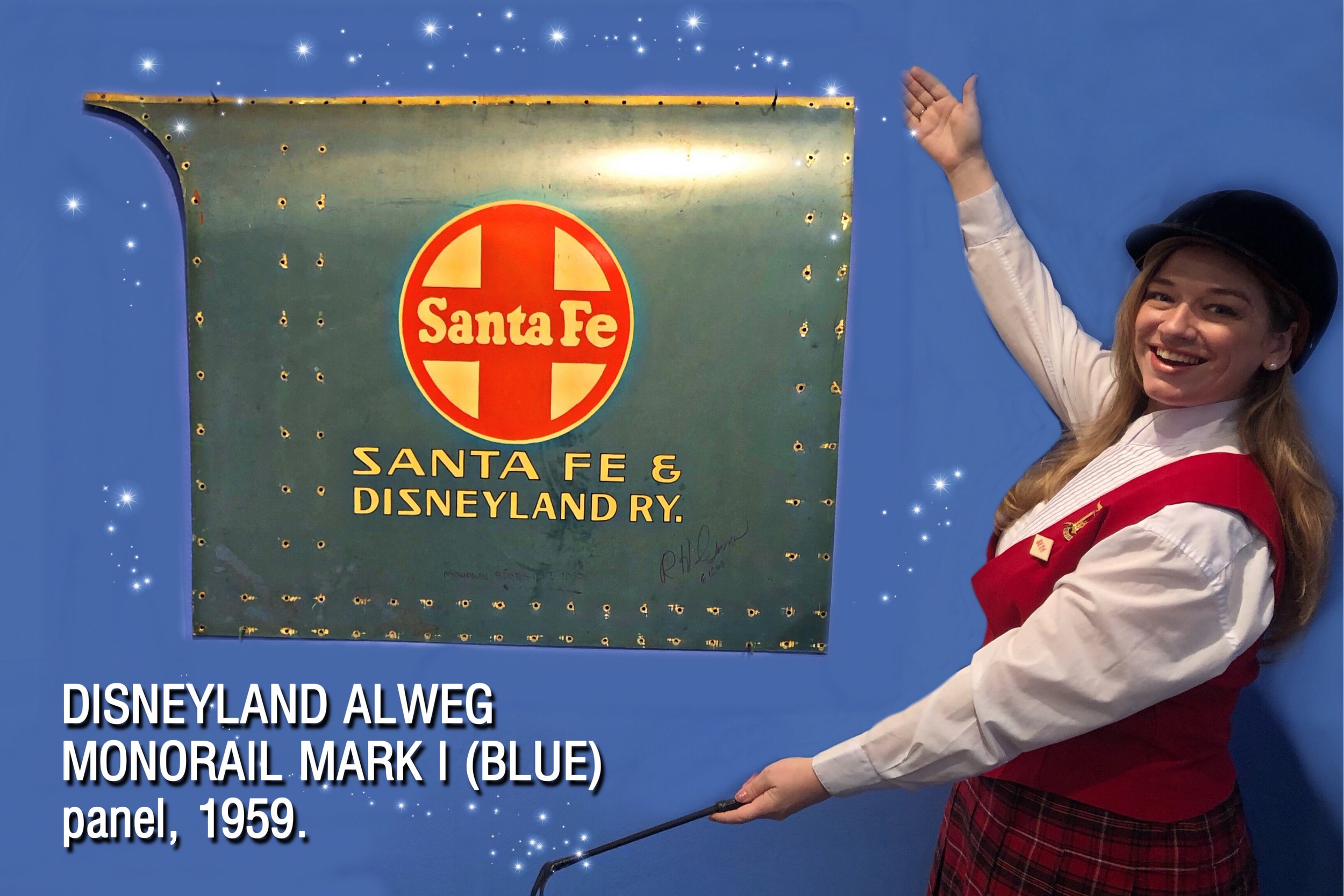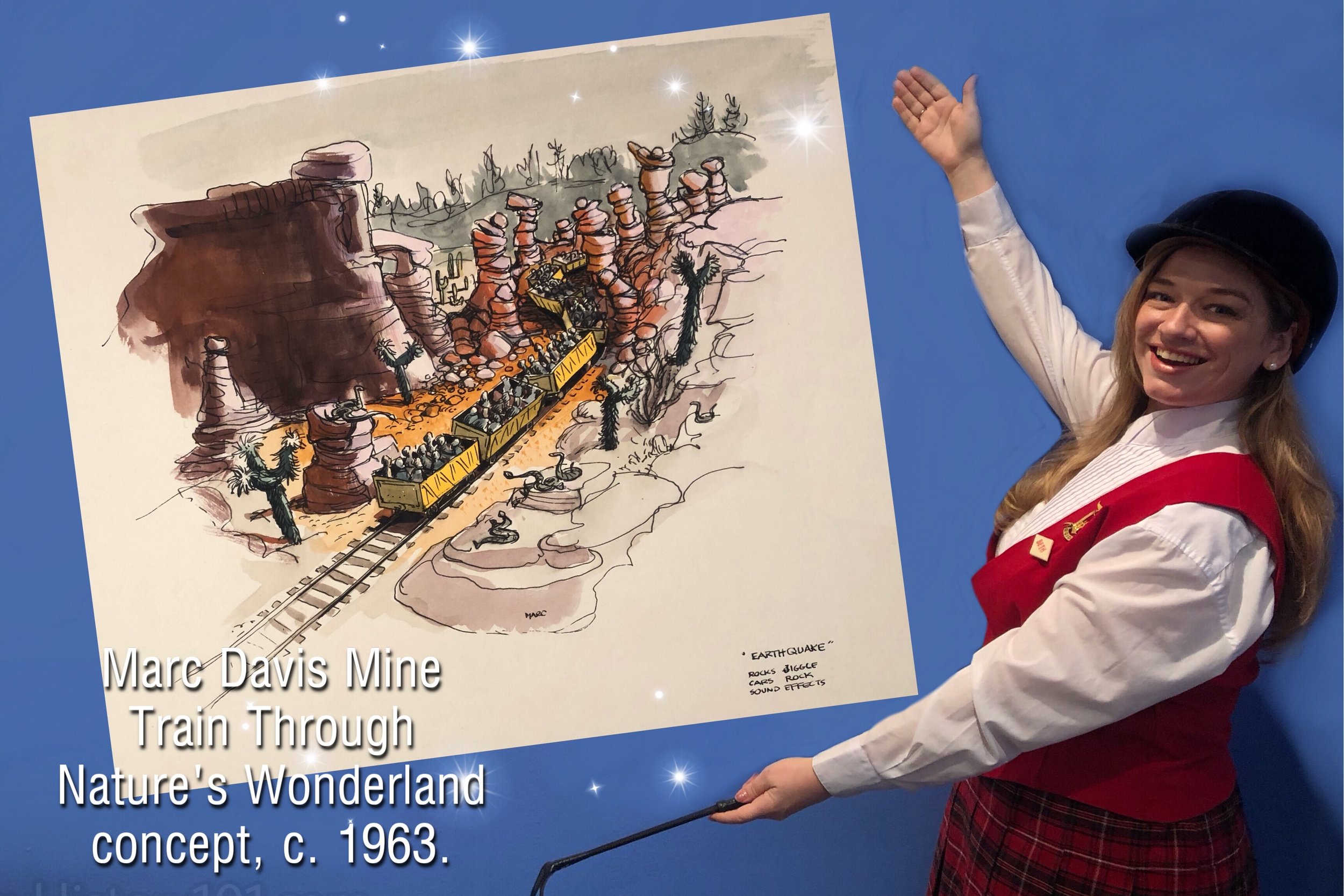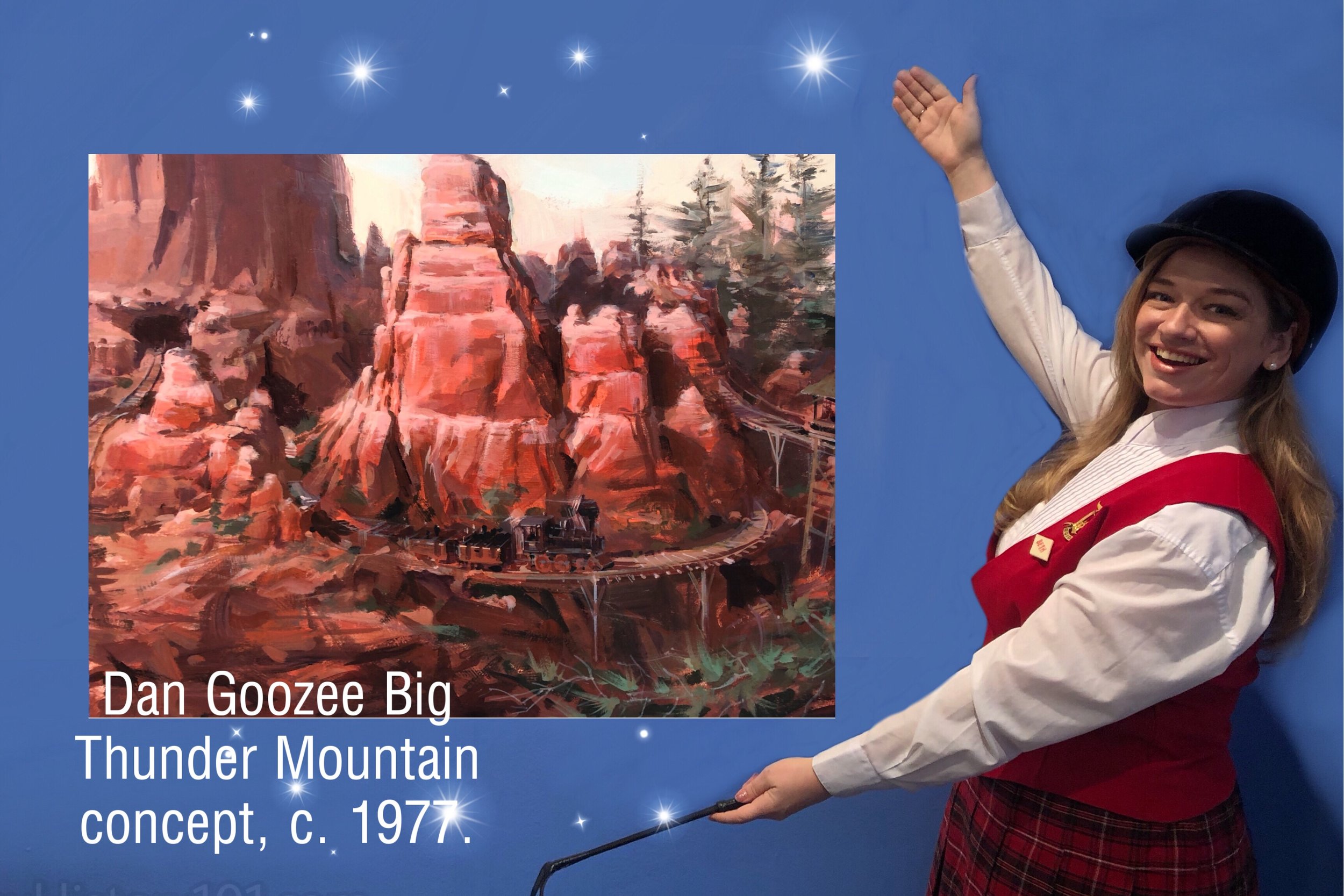(From November 10, 2018 through March 31, 2019)
“I have always loved trains.” - Walt Disney, Railroad Magazine, October 1965.
Walt Disney’s Trains (presented by Napa Valley Museum of Yountville & organized with the Walt Disney Family Museum), is an exhibition spotlighting the train collection of Walt Disney the man! Along our “Grand Circle Tour” of the Napa Valley Museum’s exhibition hall, we will make various stops at exhibits pertaining to Walt Disney’s hobby and passion for the 19th century technological marvel! We will also see plenty of artifacts pertaining to trains that were featured in Walt Disney Studios feature films, Walt Disney’s Disneyland, as well as his own backyard. At this time, prepare to step “all aboard” as your personal tour of Walt Disney’s Trains departs here!
Walt Disney aboard the Kalamazoo Handcar, c. 1958.
Exhibition graphic, Courtesy of Walt Disney Imagineering ©️ Disney.
Think for a moment about something that you enjoy doing to your heart’s content! You might recollect the first time you were exposed to the subject of that hobby or passion, and how you longed to share it with friends, family, and those whom you would meet. Similarly, (over the course of his life) Walt Disney could recall fondly much of the exposure that led to a life long love of trains. Like steaming up a locomotive, there is a process which set this extreme “rail fan” in motion.
Portrait of Elias Charles Disney (Canada, 1859 - 1941)
Exhibition graphic, Courtesy of the Walt Disney Family Foundation.
Since his boyhood days in Missouri, a spark for the railroad set a small fire, which continued to kindle and grow inside of Walt his entire life. His father Elias had worked as a machinist for the Union Pacific Railroad, and as a carpenter for their track laying crew from Ellis, Kansas to Denver, Colorado. Years later, Elias would start a family, and when Walt was just a little boy the family moved to Marceline Missouri. Marceline was just an “infant” town at this time, which sprang up and grew owing to the newly laid “life-line” known as the Atchison, Topeka, and Santa Fe! The rails ran nearby the farm community, and behind the “backyards” of many homes in the area. In fact, Walt Disney could actually see and hear the trains coming down the tracks from their farmhouse front porch!
Marceline, Missouri depot postcard, c. 1900
Exhibition graphic, Courtesy of Michael Campbell
The Santa Fe depot in Marceline would have looked similar to this when the Disneys arrived at the platform circa 1903.
Aside from what his father Elias may have shared with him, Walt also gained exposure to trains from his uncle Mike Martin who was an operating engineer for the Santa Fe Railroad’s “accommodation” train. This steam locomotive was labeled as such because it “accommodated” needs of the railway. Walt and Roy recalled Mike sharing his exciting stories with them, some of which involved interaction with colorful “wild west” characters like William “Buffalo Bill” Cody. Walt Disney remembered : “My uncle Mike was engineer on the Santa Fe’s accommodation train that ran between Marceline and Fort Madison. That was something to brag about to my school mates at a time when the railroads loomed large in the scheme of things and steam engines were formidable and exciting”.
“Uncle Mike” Martin (left), cousin of Elias Disney, and companions, c. 1905
Exhibition graphic, Courtesy of the Walt Disney Archives Photo Library
Walt didn’t get his fill of trains at home. The same Santa Fe line ran by a local park that he and his siblings would visit. Walt remembered an early intimate experience with an engine cab this way : “We fellows would marvel at the tall-stacked engines that pulled into and out of the depot opposite the park where we played, huffing with steam and trailing nebulous smoke plumes. One day in about 1909, when I was eight or nine years old and full of nerve, my buddies dared me to climb into the cab of one of them that stood there, temporarily deserted, and pull the whistle cord. I did so, but as soon as the whistle shrieked I quickly climbed down in a panic and ran like the dickens.”
Walt Disney riding in the fireman’s seat of one of his own engines (the Ernest S. Marsh), upon the time of its addition to the Santa Fe & Disneyland Railroad, c. 1959. This time, there would be no running or scurrying for Walt.
About eight years after a painful move from his beloved boyhood town of Marceline, Walt would experience one of many “silver-linings”. Walt recalled, “My brother Roy who had been employed by the Fred Harvey system as a news butcher on the Santa Fe trains, selling magazines, peanuts, apples, soft drinks, cigars, and so on, suggested that I apply for a similar job. I did so and was hired for two months…I felt very important wearing a neat blue serge uniform with brass buttons, a peaked cap, and a shiny badge in my lapel. as the train rolled into one station after another, I stood beside the train conductor on the car steps to enjoy the envious stares of youngsters waiting on the platform.”
During 1928, Walt Disney had come a long way from a Santa Fe news butch when he created the Alice Comedies series - a cinematic blend of live action and animation. During 1928, (while returning from a cross-country rail trip to confront the deceitful distributor of his films) , Walt Disney would conceive something that would eventually give him the title of “world renowned cartoon creator”. This new creation (based on a tiny mouse that he used to feed while working in Kansas City), would come to be called Mickey Mouse. Even in keeping a rigorous production schedule, trains would still run through Walt Disney’s mind and (as a result) throughout many of his short and feature-length film productions! Everything was truly going to be “O.K.” for Walt Disney!
Mickey Mouse would go on to ultimately appear in seventy-seven black and white short films from 1928 to 1935, before appearing in color. As mentioned, a few of these black and white shorts featured trains like Mickey’s Choo Choo (1929). It may be that this short film inspired another licensed Mickey Mouse product, as seen in the following photos.
The Great Depression era would “derail” and “wreck” many companies world-wide, in an unrecoverable way during the 1930s. One such company was Joshua Lionel Cowen’s thirty-year-old Lionel Corporation - a toy manufacturing company founded in 1900. At the time, much of the nation was out of work and families had little money to spare on pleasantries like toy trains. Parents were more concerned foremost with putting food on the table, and children were grateful for that.
When things looked bleak, new pal Mickey Mouse would help bail the Lionel Corporation out from the brink of bankruptcy. The historic merchandising license signed on July 19, 1934 enabled the once-unsteady toy company to produce the soon-to-be popular Mickey Mouse handcar. Though this toy came with the high price tag of $1, more than 254,000 units were sold during the first four months. This enabled Lionel to get “back on track “ (financially speaking), far before the Christmas shopping season of 1934 was complete. Soon, more production facilities were needed and established to meet the demand of more than 1.25 million handcars. As for Lionel, they began to move “full steam ahead” with a new profitable line of popular Disney-licensed products featuring Mickey and a few of his friends. Please CLICK the previous photograph, and view a Mickey Mouse Handcar box top, as well as an advertisement produced during 1935.
Now, let’s take a closer look (1) the Mickey Mouse Circus Train Coal Car (2) the Donald Duck and Pluto Rail Car, and (3) the Mickey & Minnie Handcar by CLICKING the following photograph!
Other shorts continued to feature trains and railroad themes like Donald’s Ostrich (1937). Outside the Walt Disney Studios, trains touched the lives of many of Walt’s employees, one of whom was Ward Kimball. Knowing this, Walt Disney would utilize the skills of his fellow “train buff” in order to create one of Walt Disney Studios’ most recognizable steam engines. In fact, this memorable little engine would go on to steal the show, and become the theme of a popular Disneyland attraction more than a decade later.
Disney Studio Artist Casey Jr. Maquette, Dumbo (1941),
Sculpted plaster, Walt Disney Family Foundation, Collection of Ward Kimball ©️ Disney, 2004.2.125
Please CLICK the following photograph and browse a collection of Dumbo production material - including a photostat model sheet and several animation drawings produced in graphite, colored pencil, and charcoal on paper. (Casey Jr. model sheet, c. 1941, Walt Disney Family Foundation, Collection of Ward Kimball Disney 2004.2.104.1 ; Casey Jr. animation drawings, Collection of the Walt Disney Family Foundation ©️ Disney 2004.2.112.3, 1, 2004.2.104.10)
Late 1948 was a difficult time for Walt Disney. The effects of World War II were still lingering, and many of Walt Disney Studio’s animators were on strike. Concurrent feature length films like Dumbo were under-performing in box offices and so a disappointed Walt began to temporarily switch to producing live-action theatrical releases. Many of these films would also feature trains, and Walt would get to enjoy working with these marvelous machines. One such film was The Great Locomotive Chase which told the tale of the raid of James Andrews commandeering of the General locomotive and subsequent raids on Confederate railways during April of 1862. During filming, Walt had the opportunity to climb aboard the 1856 William Mason locomotive which played the part of the General!
The Great Locomotive Chase - 1 sheet poster, 1956, Lithograph on paper, Collection of the Walt Disney Family Foundation, gift of Dean Barickman ©️ Disney, 2006.18.713
“I invited Walt to be the guest engineer for the roll out of our coal-burning 1881 Baldwin Mogul. I’m sure that I never saw him smile any wider than that evening when he pulled the throttle on the Emma Nevada as she steamed out of the engine house with her bell ringing and whistle blowing.” -Ward Kimball
During this time the related stress of running the studio was beginning to cause Walt to “run out of steam”. By doctor’s orders, Walt would take some personal time away from the studio in order to enjoy a few of his hobbies. This meant taking a few needed vacations with his wife, as well as a few train-related holidays with fellow “railfans”!
it just so happened that fellow “train buff” and prized animator Ollie Johnston had his own narrow-gauge backyard railway. He and his wife would invite Walt and Lillian for a ride now and then, along the lines of their Deerlake Park & Julian Railroad.
During 1948, Walt visited two train related exhibitions - one at the Chicago Railroad fair and another at the Henry Ford Museum with employee and fellow rail fan Ward Kimball. Ward and Betty also invited Walt to sit in the cab and play engineer for the steam up of the Emma Nevada along the tracks of their own Grizzly Flats Railroad!
By the early 1950s, Walt Disney had developed an itch to own his own narrow gauge railway. So at a time contemporaneous with the development of a “little” project called Disneylandia, the Carolwood Pacific Railroad was realized! Walt would construct many of the rolling stock in his studio machine shop. Walt would also incorporate his love of miniatures as he would craft the small fixtures that decorated the interior of the Lilly Belle’s caboose.
Carolwood Pacific Railroad model by Jack Verducci.
From 1950 to 1953 Eddie Sargeant (an employee of the Walt Disney Studio Machine Shop) would draw up plans for the Lilly Belle based on an 1872 Central Pacific steam locomotive. He would also contribute plans for the Lilly Belle’s related stock & equipment. Eddie was a fitting machinist for workin’ on the railroad, because he was also a narrow gauge “live steam” model railroader! Please CLICK the following image and scroll through a few facsimiles of Eddie’s original blueprints. After that, we’ll take a closer look at one of the many Lilly Belle duplicates manufactured with the aid of his technical drawings.
Eddie would also help design the layout for Walt Disney’s Carolwood Drive property. The railway (with its included turnouts, tunnels, and 45-foot-long wooden trestle bridge) totaled an impressive 2,615 feet long. As to Carolwood Pacific’s rolling stock, Walt remembered : “Shortly after the second World War, I was having trouble getting my studio rolling again. I knew another fellow living in Beverly Hills who had built a midget railroad and I determined to build one of my own to keep my mind busy and off studio problems. The engine and tender combined was seven feet long and operated on coal and water, like the ones I had known as a news butcher. I fashioned all of the cars by myself. The boxcars were big enough for a person to straddle, and the flatcars could seat two. My special pride was the caboose which I furnished entirely in miniature, right down to the pot-bellied stove. The engine was designed after one that I had run on the Central Pacific, so I named my little railroad the CP, for the Carolwood Pacific, the street I lived on.”
Reproduction of a Carolwood Estate keystone arch belonging to the “S-shaped” Rorex Tunnel.
The Walt Disney Family Museum
Art would begin to imitate life over the following years, and trains would continue to become the feature or subject of numerous short and package films. The previously licensed Donald Duck Little Golden Book story would receive the silver screen treatment, and the unforgettable short film “Out of Scale” would be produced. Product tie-ins for this short film (like records, books, and puzzles), would continue to be marketed and sold late into the 1960s.
Chip ‘n’ Dale Railroadin’ Songs LP , c. 1962, Collection of Michael Campbell ©️ Disney / Disneyland Records, and the preceding source material Donald Duck’s Toy Train, 1950, A Little Golden Book, Collection of Walt Disney Family Foundation, gift of Dean Barickman, 1950 ©️ Disney 2006.18.2934.
“I just wanted it to look like nothing else in the world. And it should be surrounded by a train.” - Walt Disney
During 1953, the Carolwood Pacific Railroad would sadly cease operation after a derailment. However Walt Disney wasn’t through with narrow gauge trains. In fact, he was already conceiving plans for a Mickey Mouse-themed park complete with yet another train that would carry even more passengers than the rolling stock of his backyard line ever could. The plans for the Mickey Mouse Park were initially proposed to the Burbank City council during 1953, but unfortunately they were swiftly rejected. “We don’t want the carny atmosphere in Burbank”, stated one council member.
Harper Goff “Mickey Mouse Park” concept, Courtesy of Walt Disney Imagineering ©️ Disney
There was nothing stopping this “train of thought” and development continued to move forward on the project now known as Disneyland. Newer conceptual artwork only “fueled Walt’s firebox” as a search continued for Disneyland’s future site. After intense economical research data was weighed, a home was soon found amidst the quiet agricultural orange and avocado groves of Orange County, California! Please CLICK the following photograph for a closer look at Marvin Davis’ map of the groves. it doesn’t look like much, but those are Walt Disney’s grease pencil lines representing the Disneyland Railroad’s future path!
The encompassing area of Disneyland Park was specified on early drawings as “Approx. 45 acres Within Railroad Tracks”. Clearly, (before anything else took form), the main Disneyland attraction would be a railroad. But this vague description would change when artists like Bruce Bushman and Herb Ryman would be assigned the task of filling that acreage with Walt Disney’s catalog of popular characters and settings. When you take a closer look at just one of the many early Herb Ryman “brown-line” drawings that happens to be on display, you start to get a sense of immersion into the themed lands that would occupy portions of Walt Disney’s soon-to-be realized “Disneyland”!
Herb Ryman birdseye view of Disneyland Park, c. 1953, Courtesy of Walt Disney Imagineering ©️ Disney.
July of 1955, Disneyland would open to the public with a Railroad sponsored by the very company that Walt and his family once worked for - the Santa Fe Railroad! In turn, many features of the trains (including their names) would stand as a tribute to Santa Fe Railroad history. A few years later the company would sponsor another attraction - the opening of the Grand Canyon Diorama during June of 1958.
Walt Disney hung out this Ernest S. Marsh cabin panel window for the 1959 photograph featured toward the beginning of this article.
The John Lasseter Collection.
Disneyland was not complete with just one railroad. In fact, Disneyland became home to many railways during Walt’s lifetime - the Casey Jr. Train over Storybook Land, the mine train departing from Rainbow Ridge, Tomorrowland’s short-lived Viewliner, as well as multiple fleets of electric Monorails over the years! Please CLICK the following photograph and explore a gallery of artifacts and rarely-seen illustrations of a few of these “vintage” Disneyland attractions.
“What happened to the Carolwood Pacific train? I still have it. I’m going to get it repainted and displayed in a glass case at the Disneyland and Santa Fe station. That’s only right, since it spawned the busy little railroad here in Disneyland and somehow is tied up emotionally with my boyhood experience as a news butcher.”
“Yes, in one way or another, I have always loved trains.” - Walt Disney
Image : Public Domain
After our tour today, we will never hear a whistle blowing down the Disneyland Railroad’s tracks in quite the same way again. We are left with the observation that railways coursed throughout Walt Disney’s entire world - from his home life to his work at the studio. Whenever he got the opportunity, Walt just loved to share this passion with those he met. It is touching to know that every time a guest steps aboard one of his railroads inside one of his magic kingdoms worldwide, Walt even continues to share his fascination with trains both past and future.
Now, . . . “All Aboard!”
Please, step this way!
ADDRESS :
55 Presidents Circle, Yountville, California 94599
TICKET PRICES :
(audio tour included with all paid admissions)
Adults (18 to under 65): $20.00 including the audio tour
Seniors (65+): $15.00 including the audio tour
Youth (6–17): $10.00 including the audio tour
Children (5 and under): Free
Admission Free for residents of the California Veterans Home and Active Duty Military.
